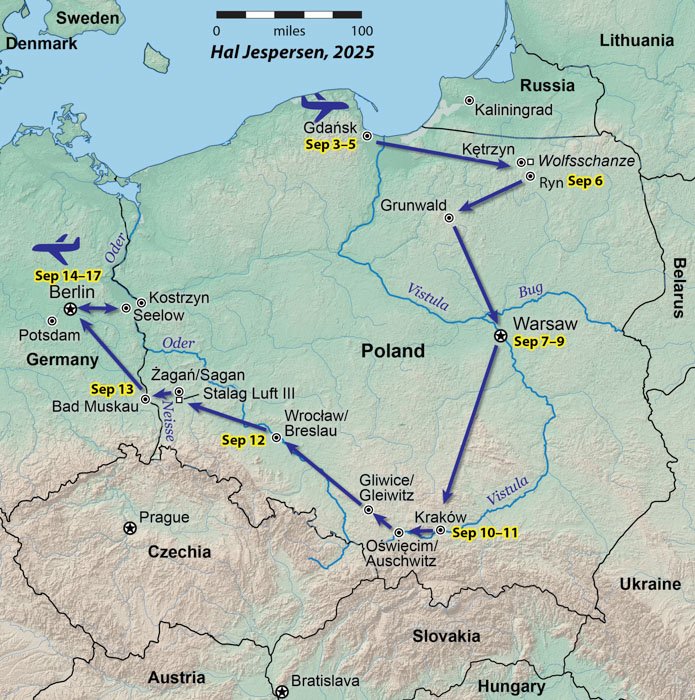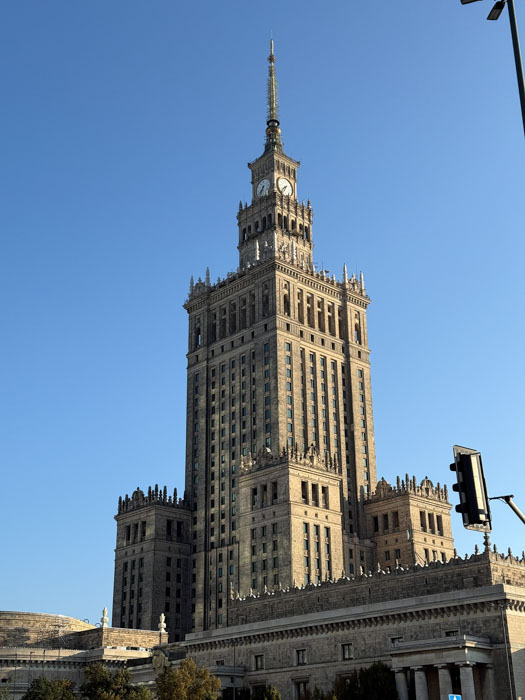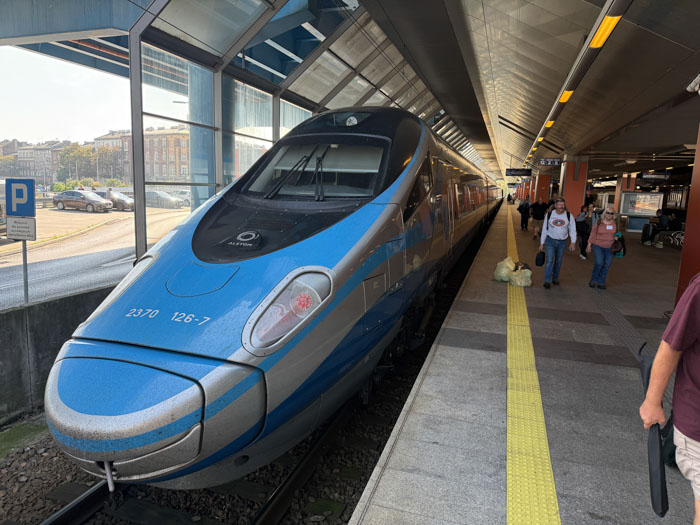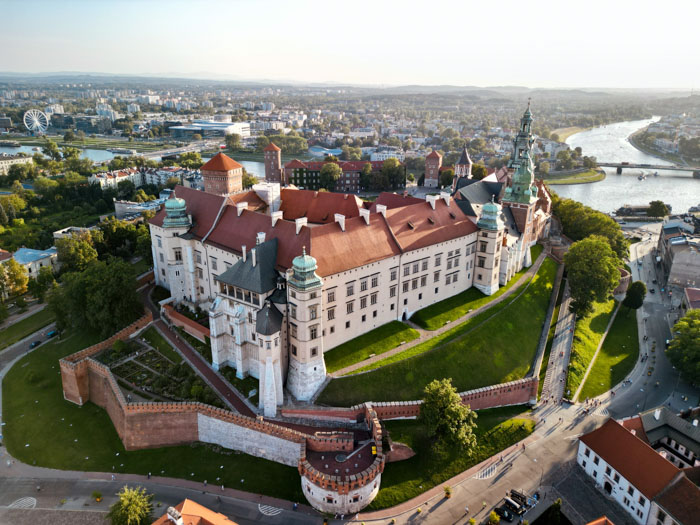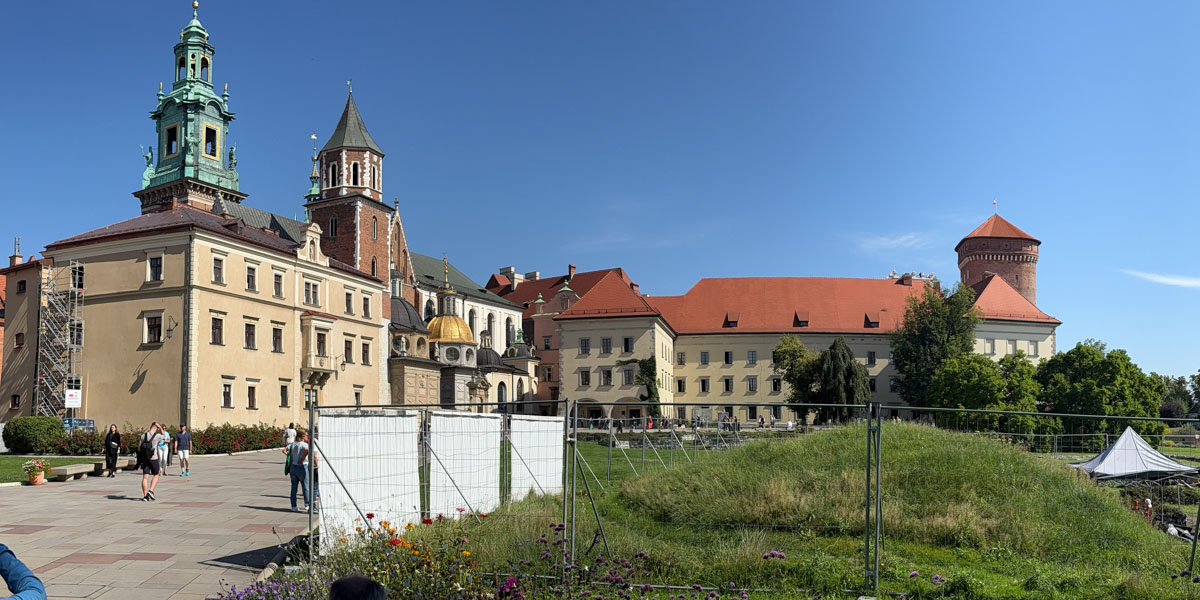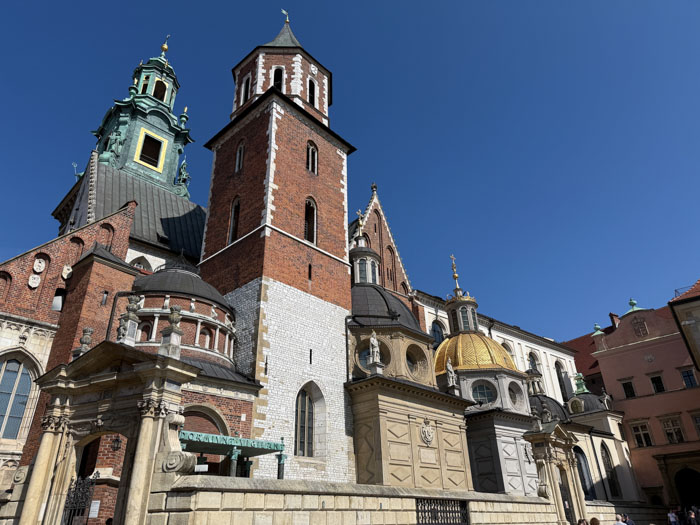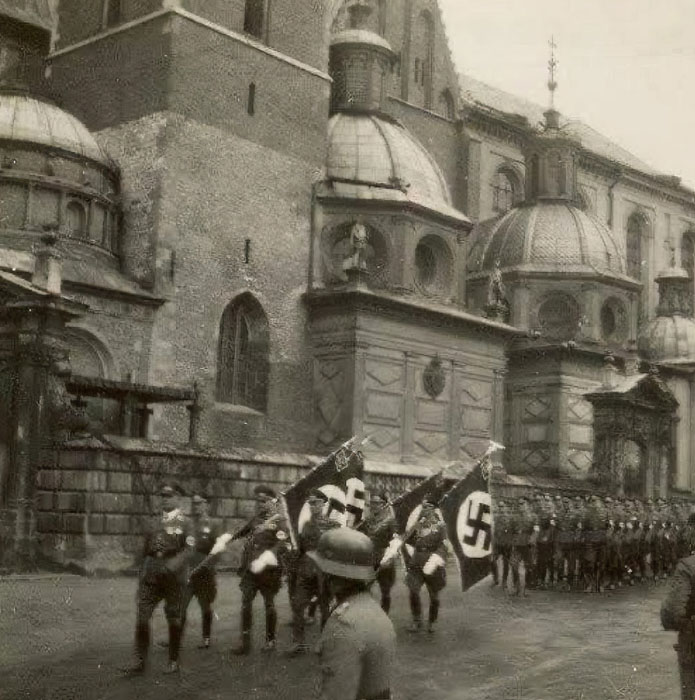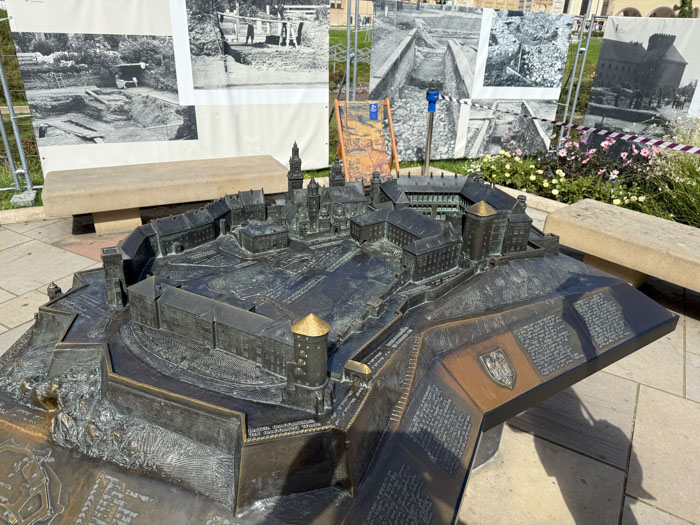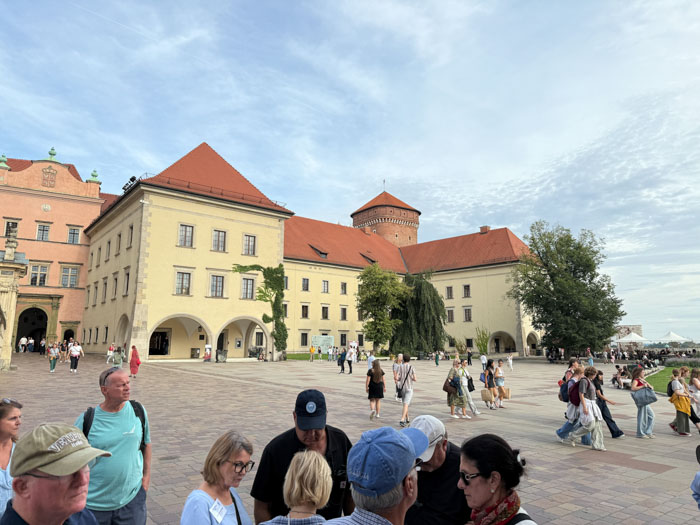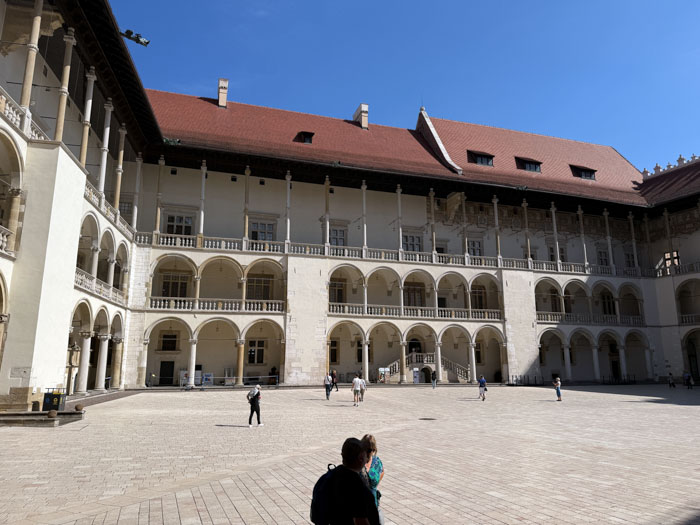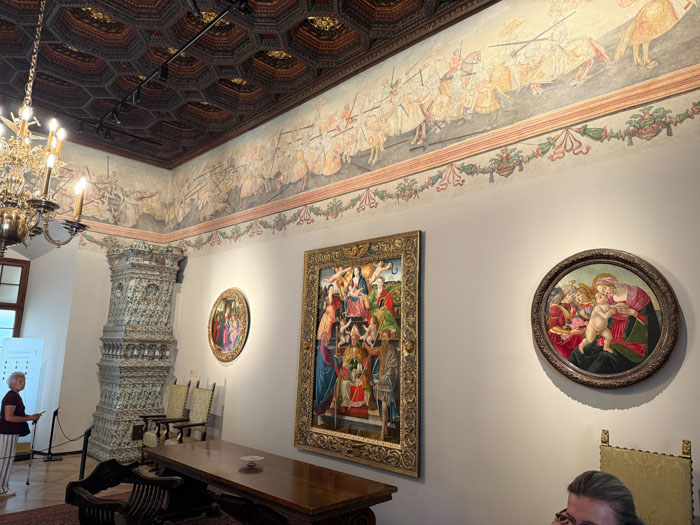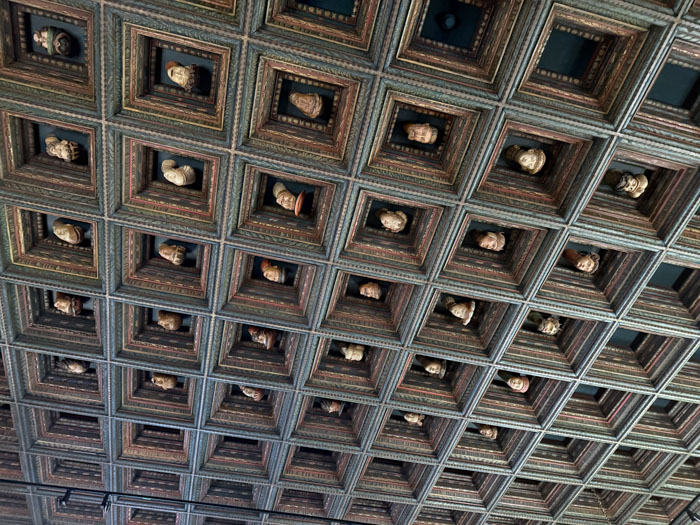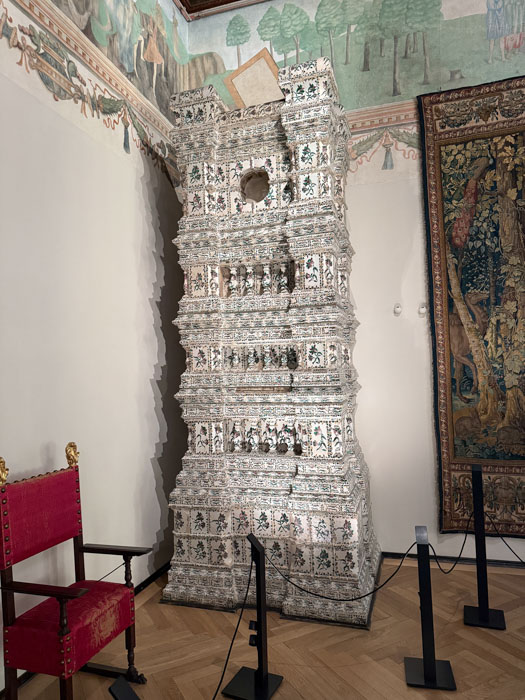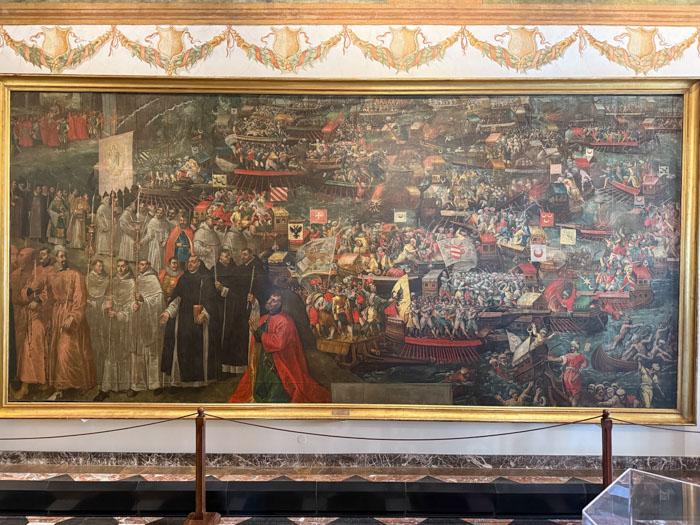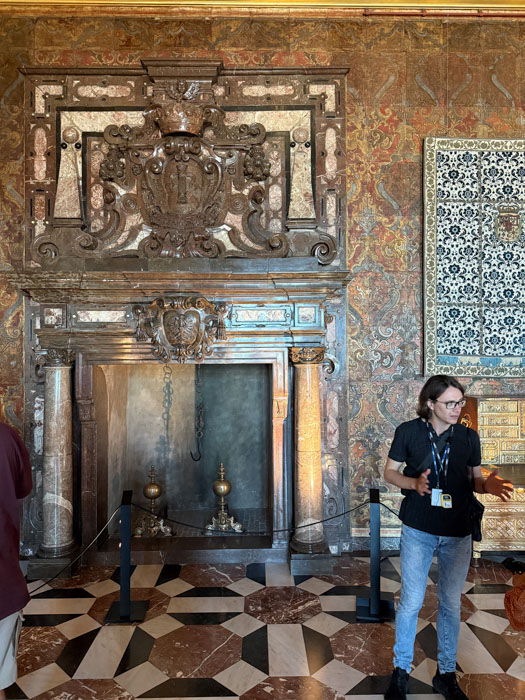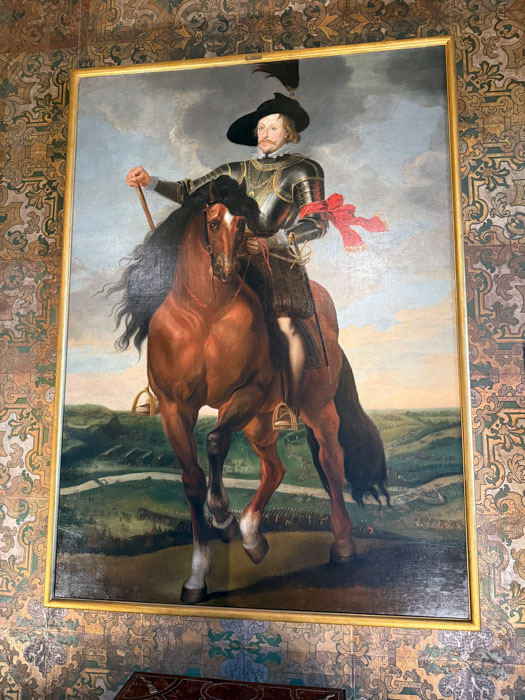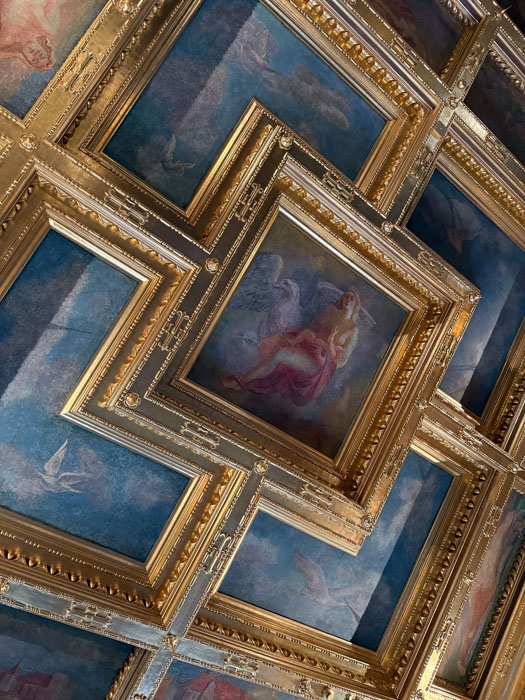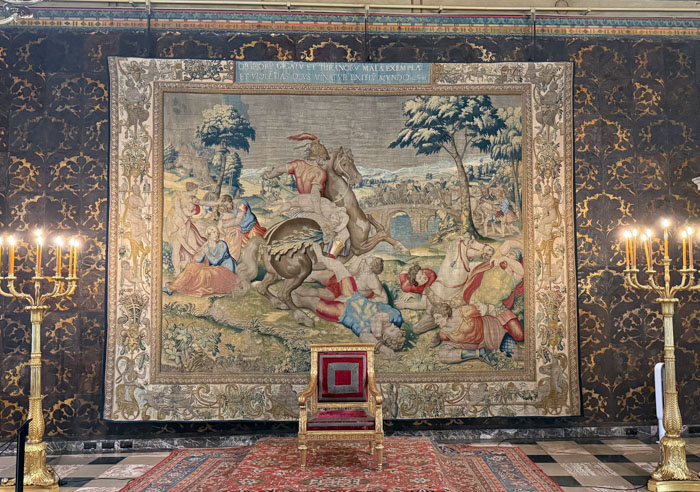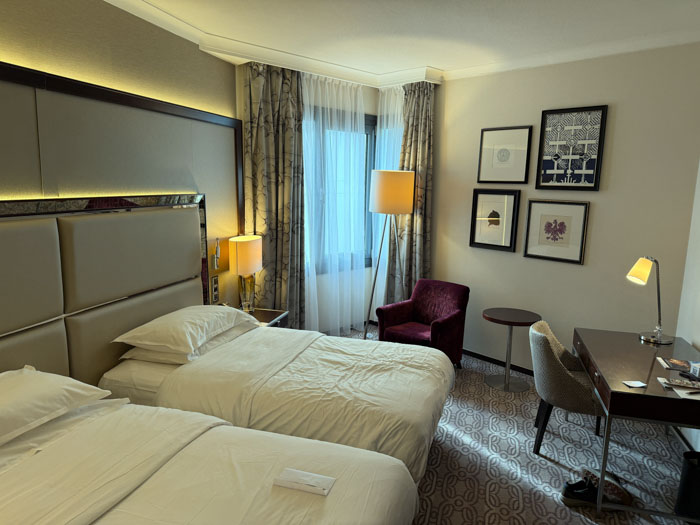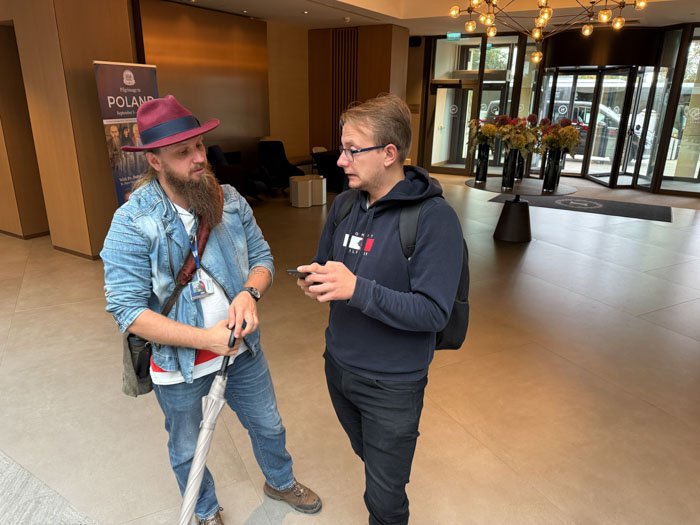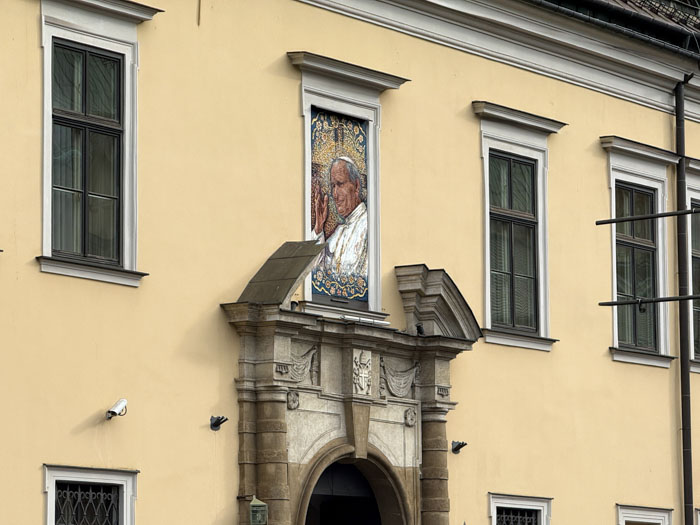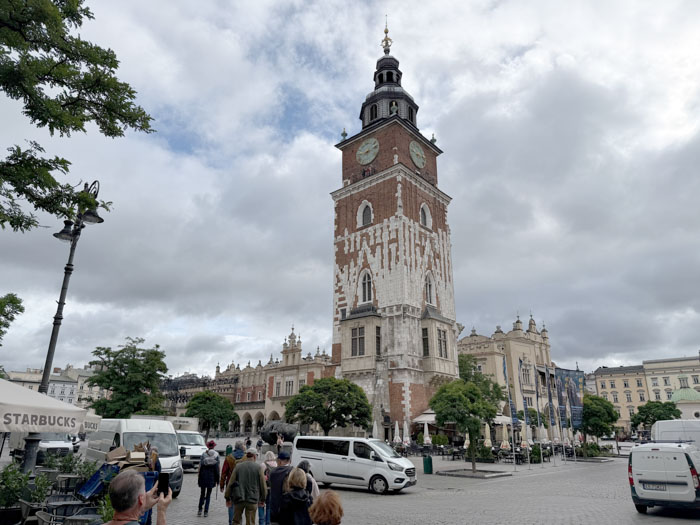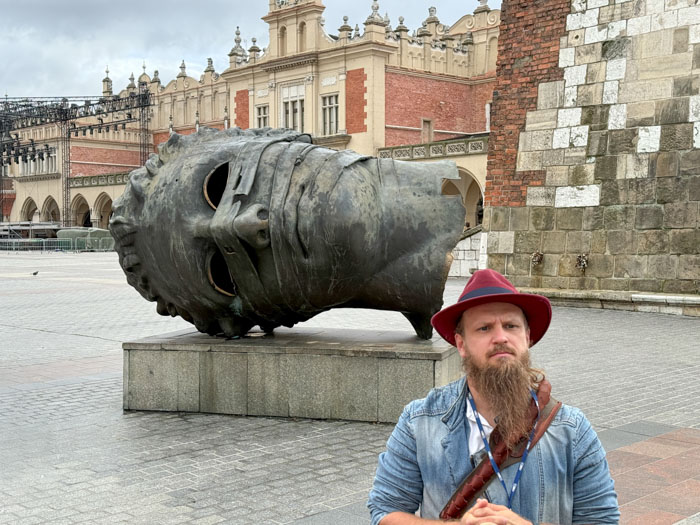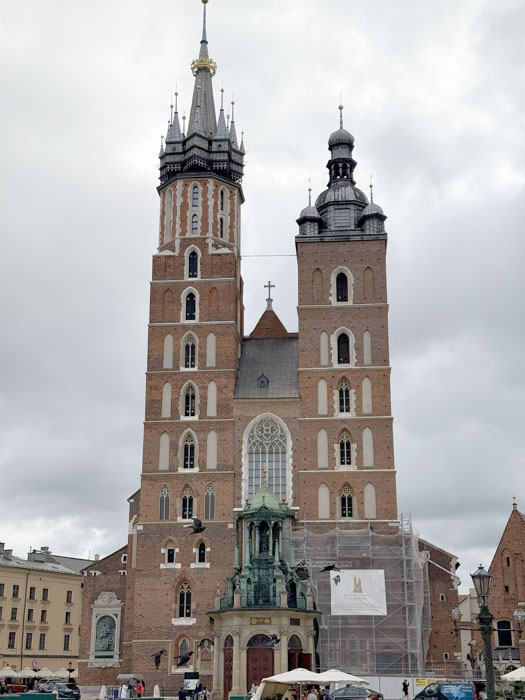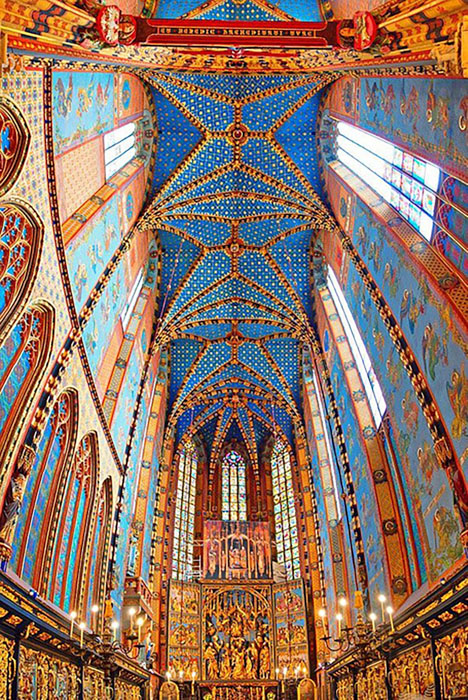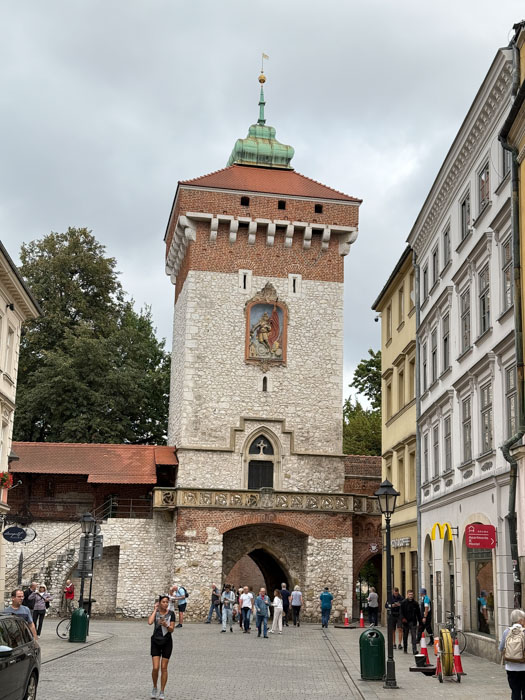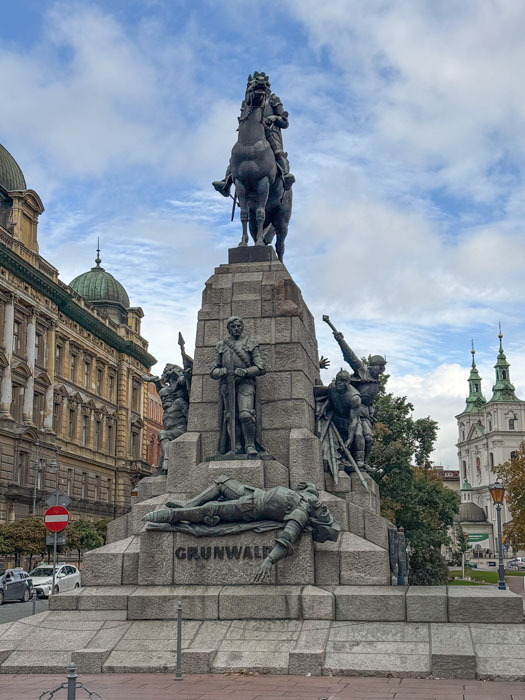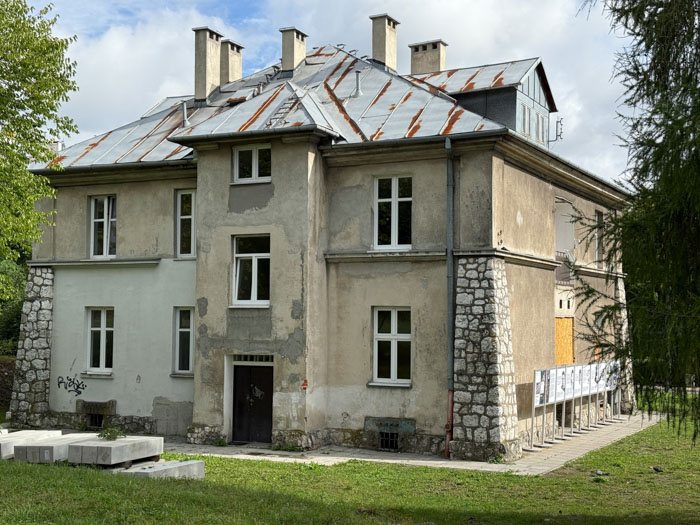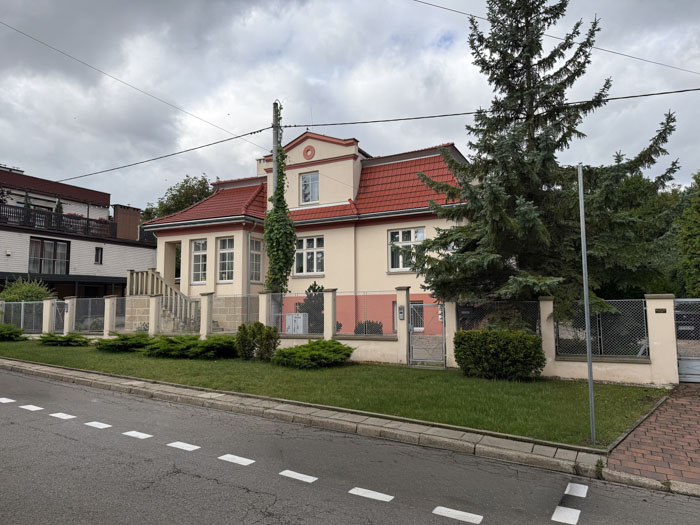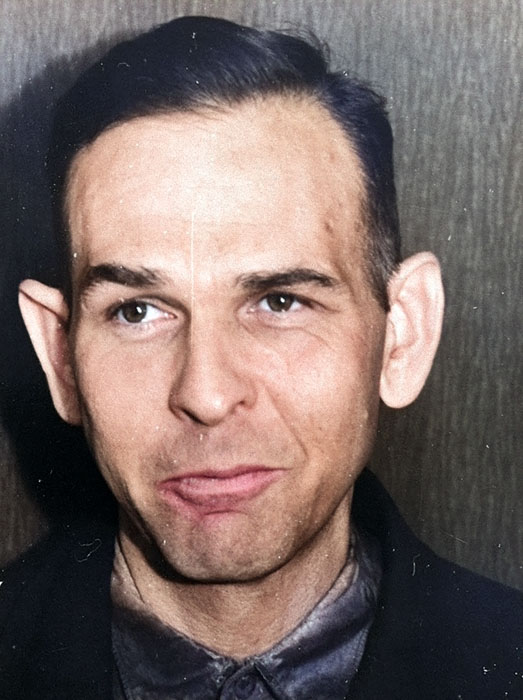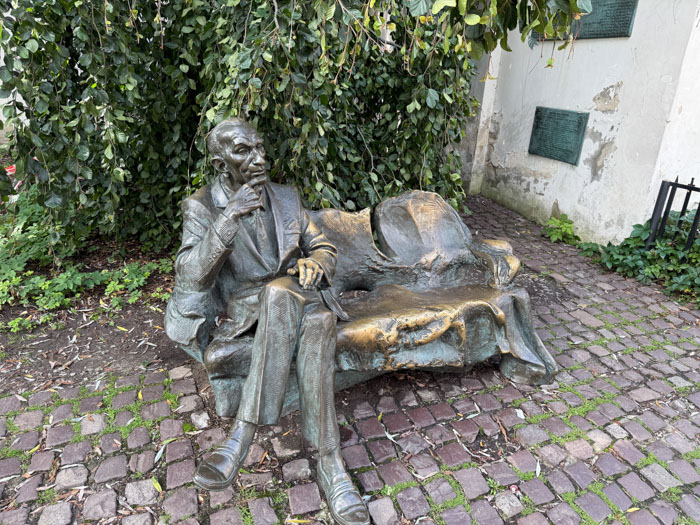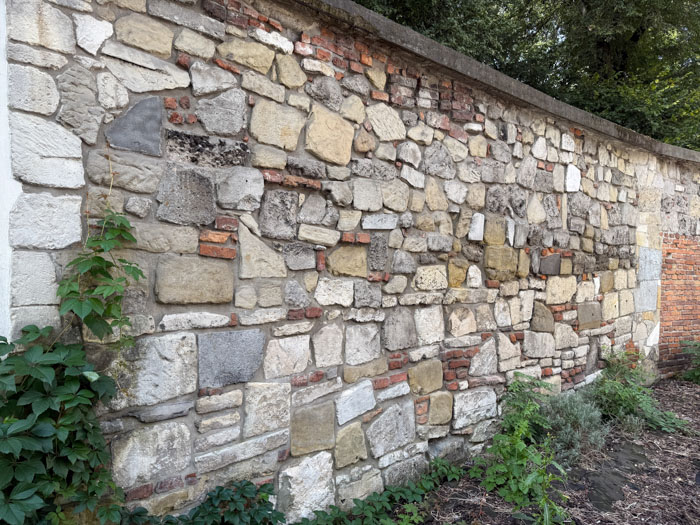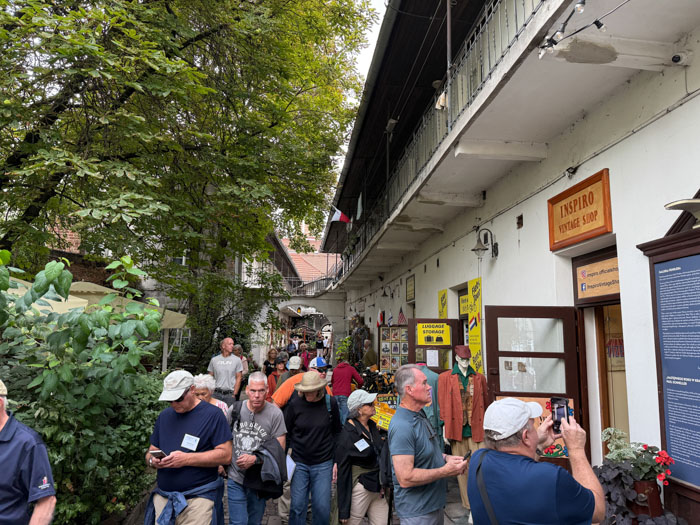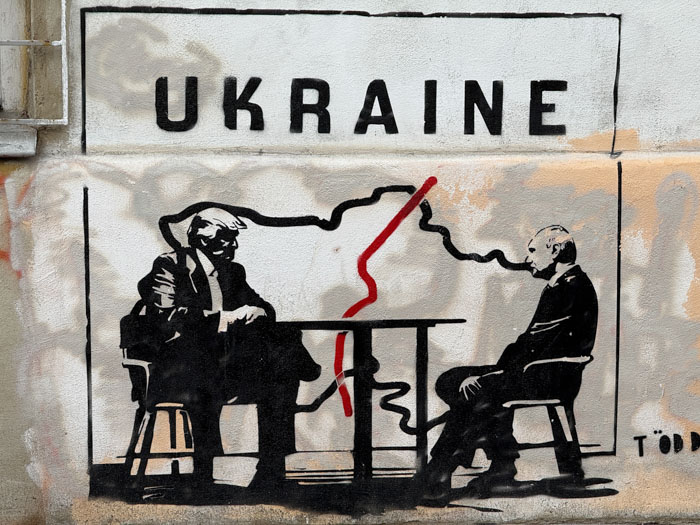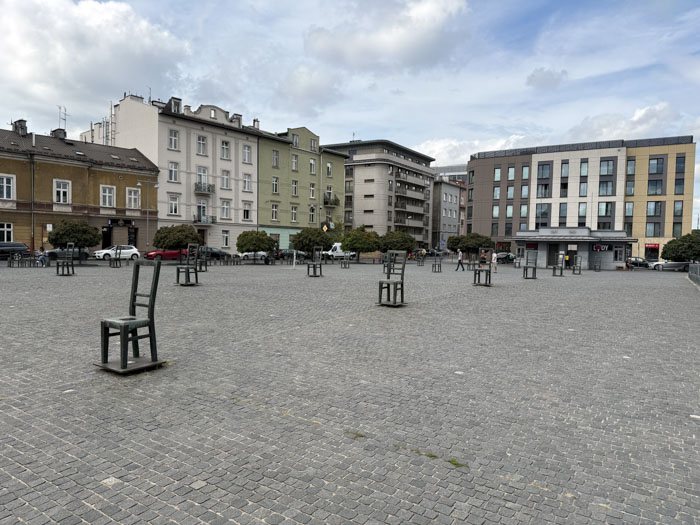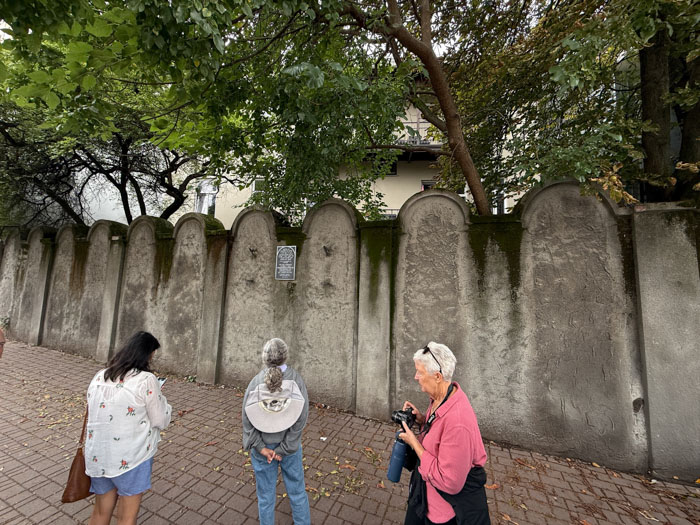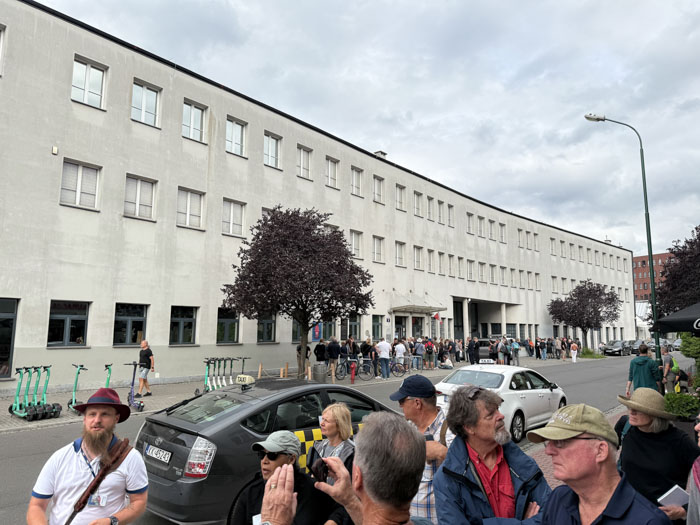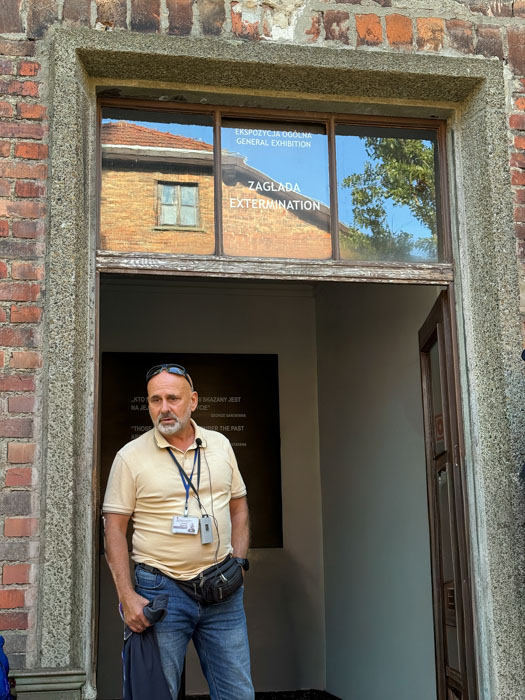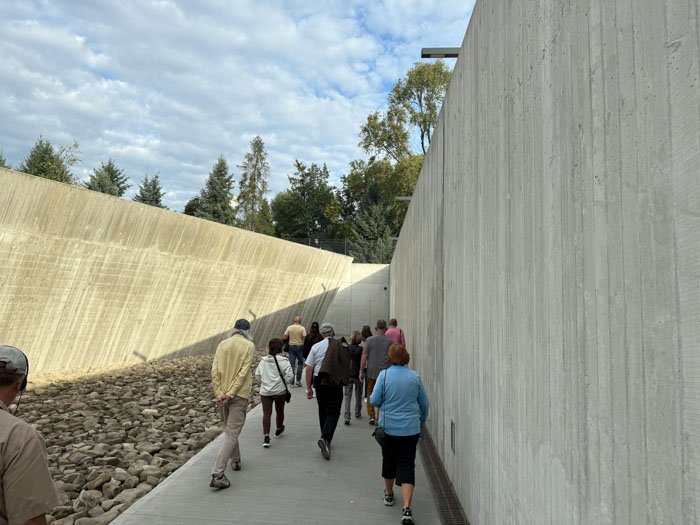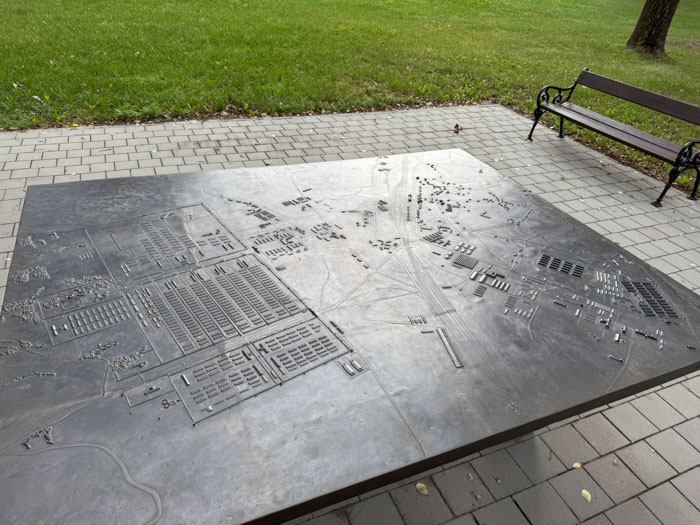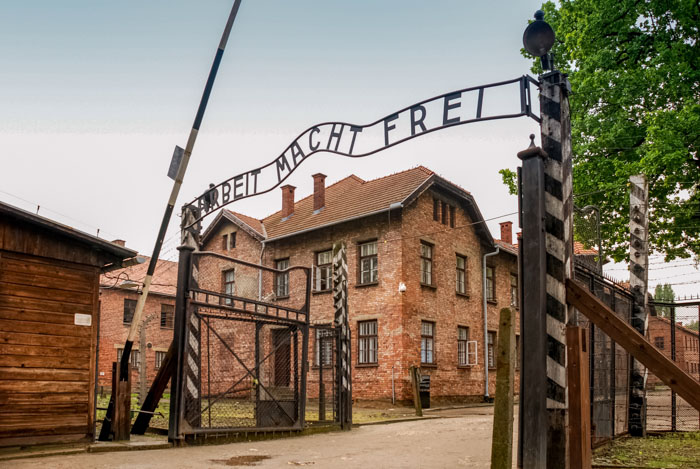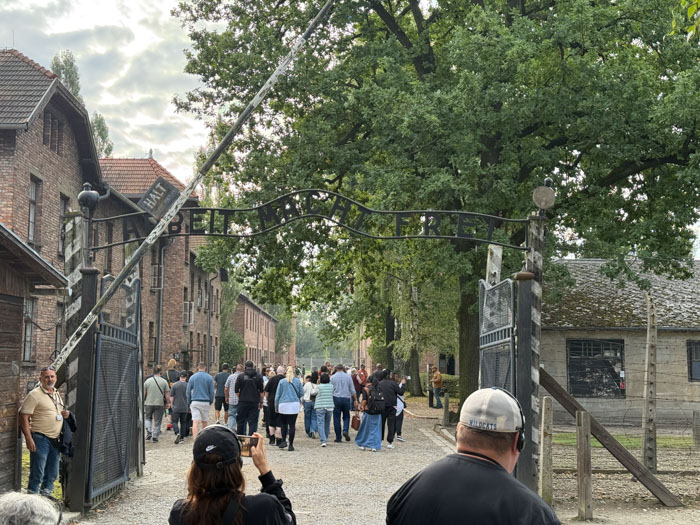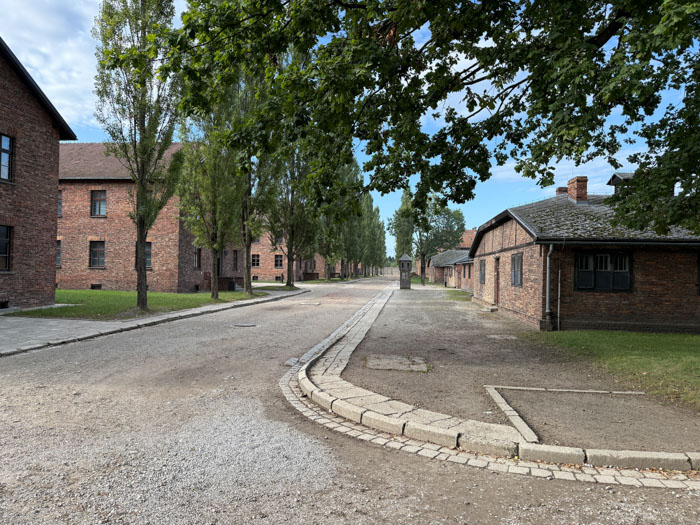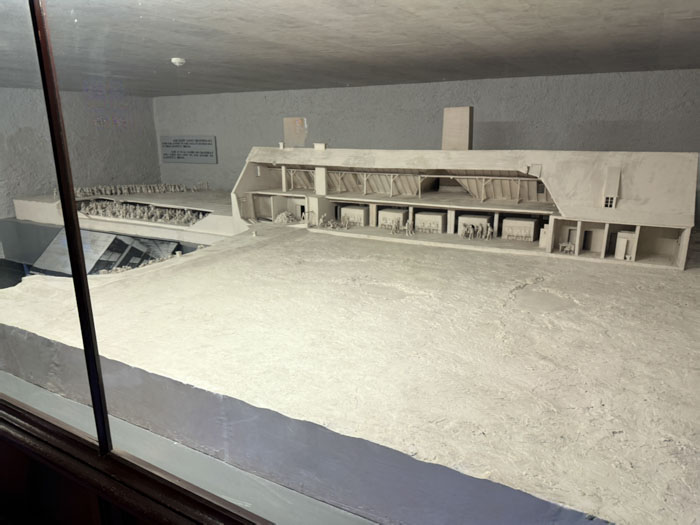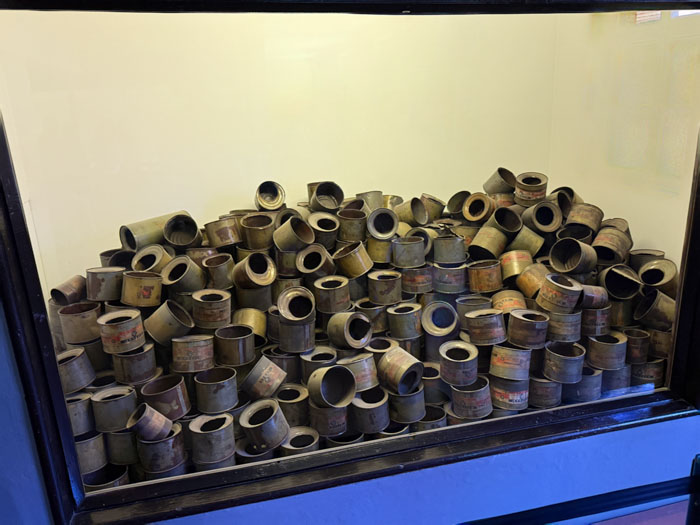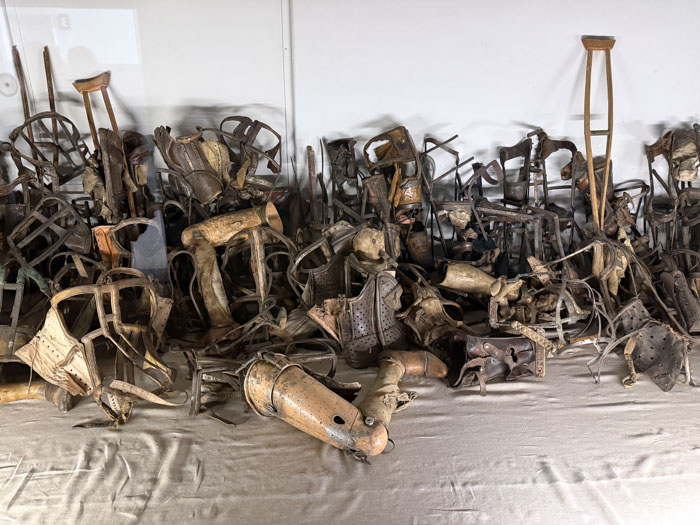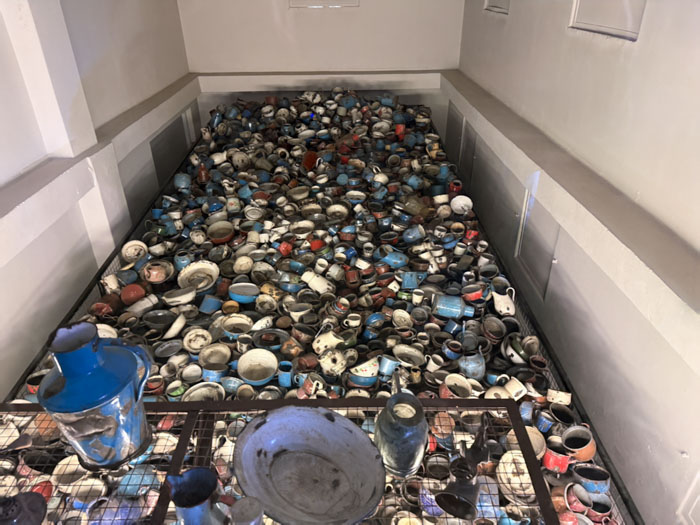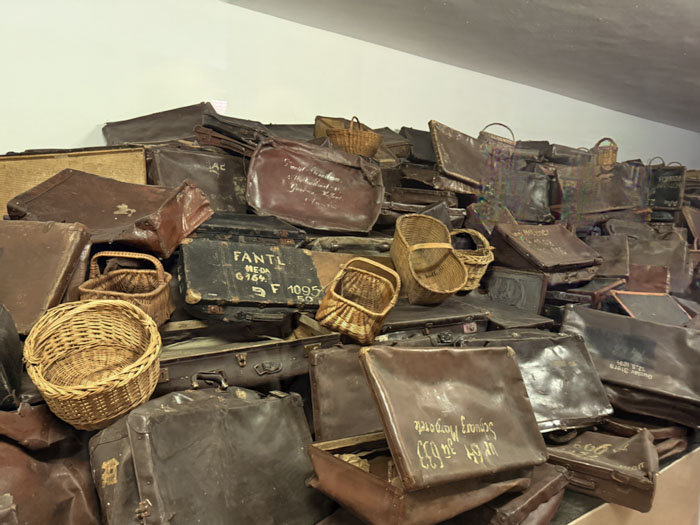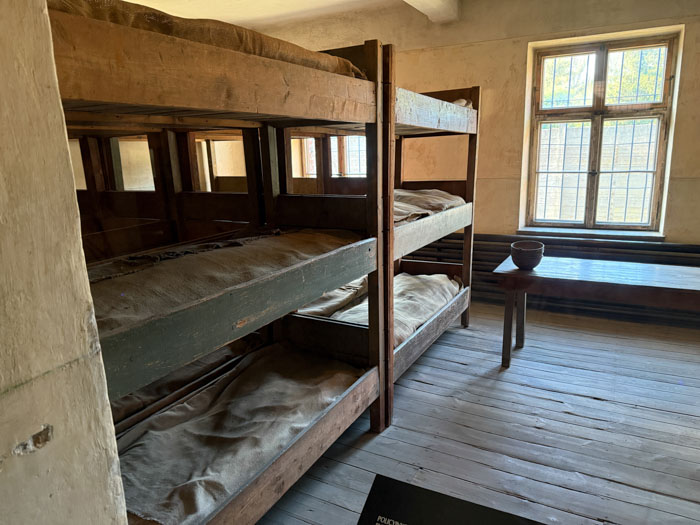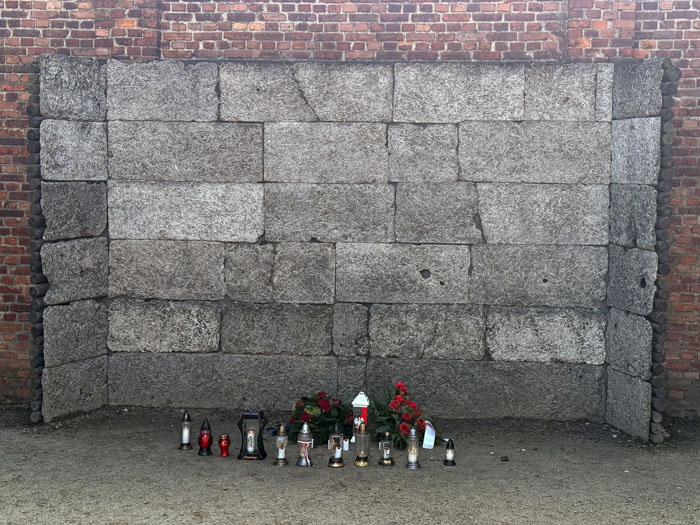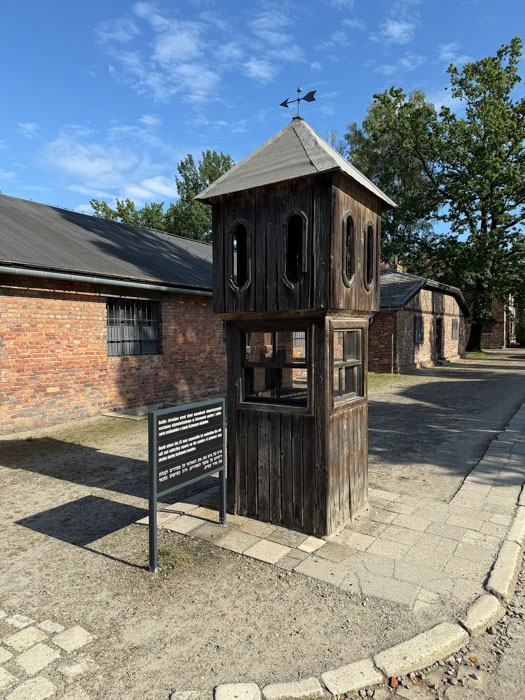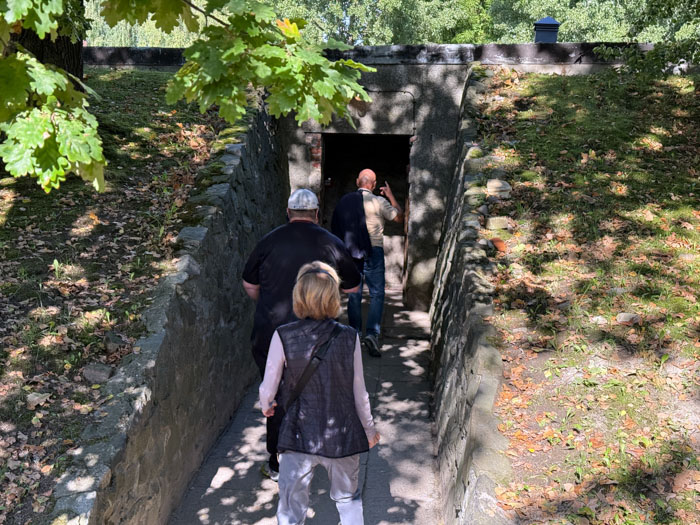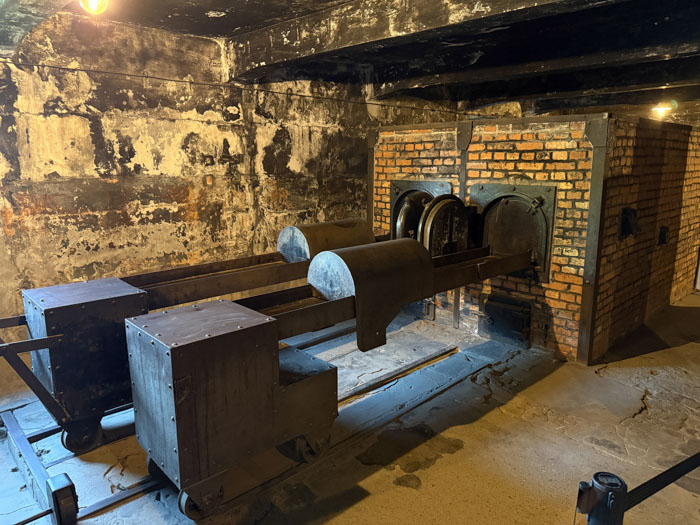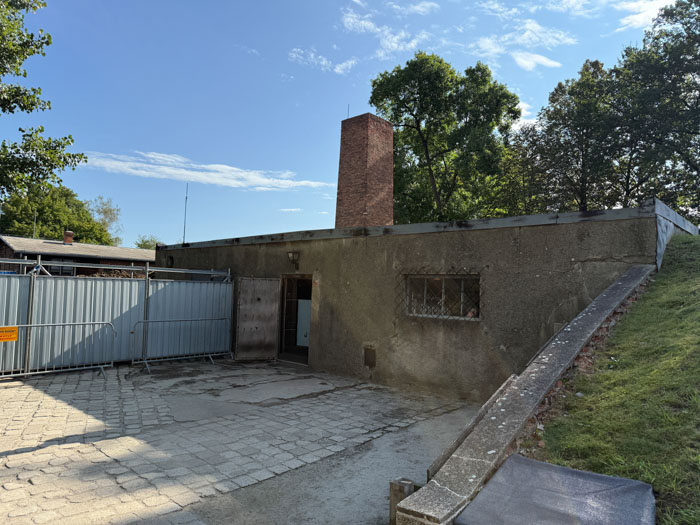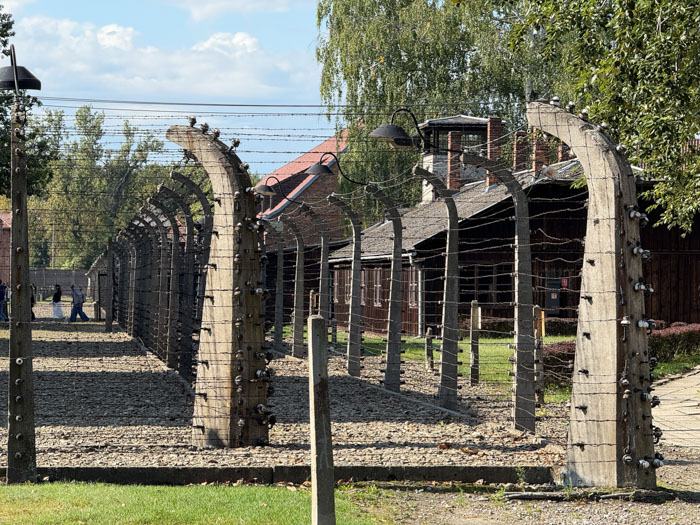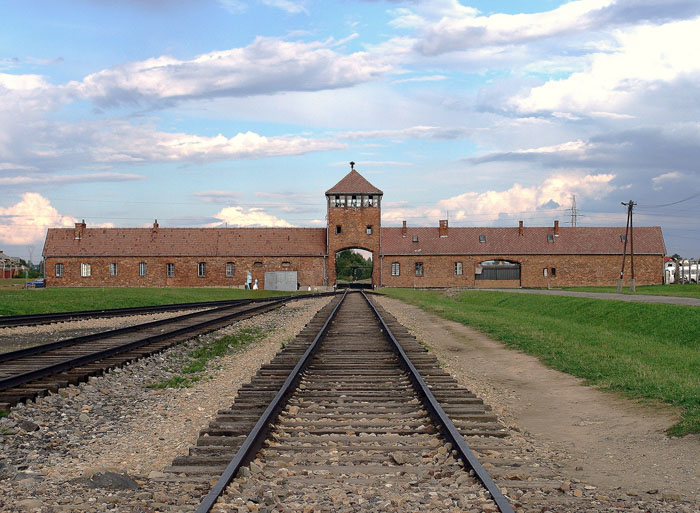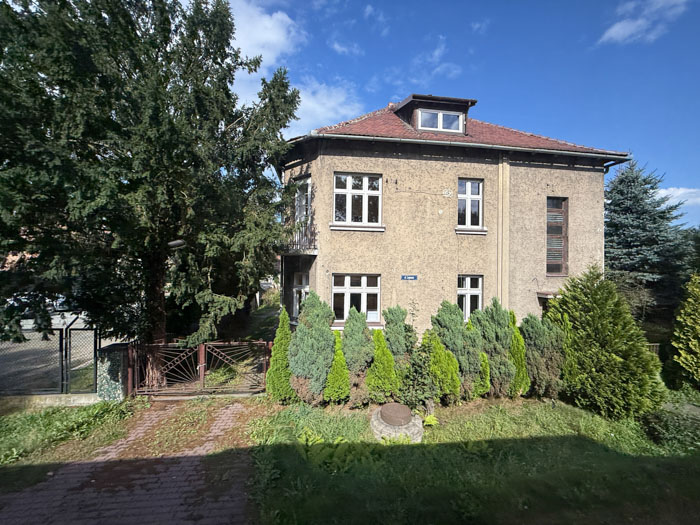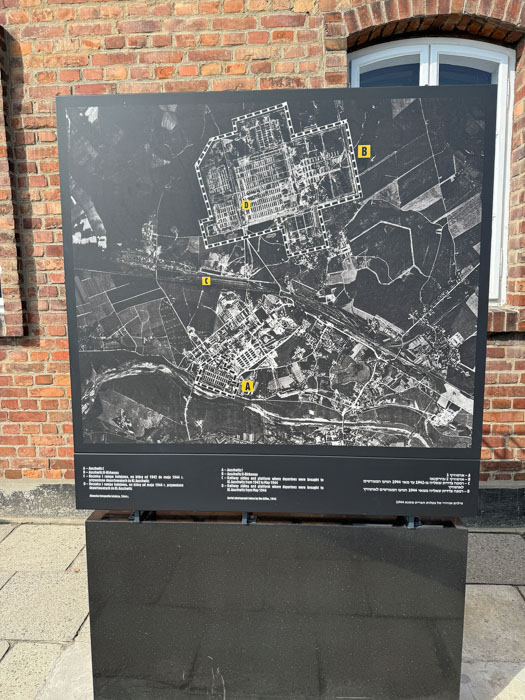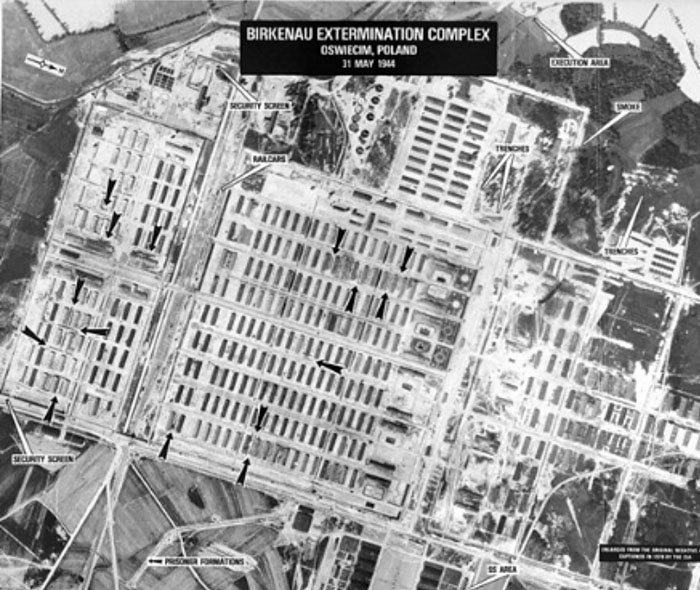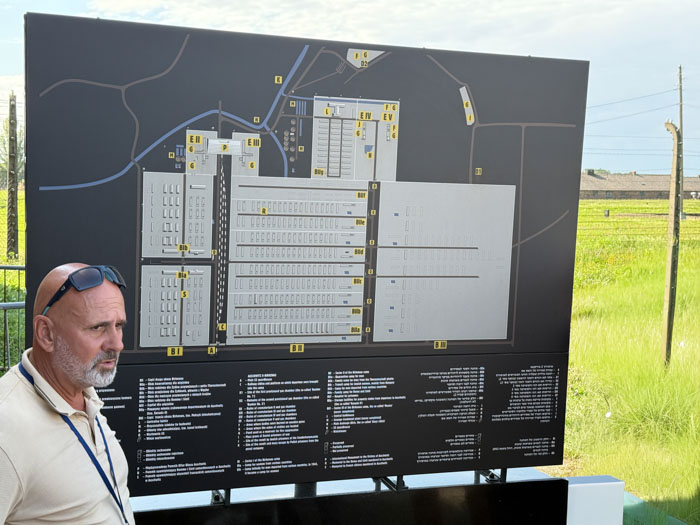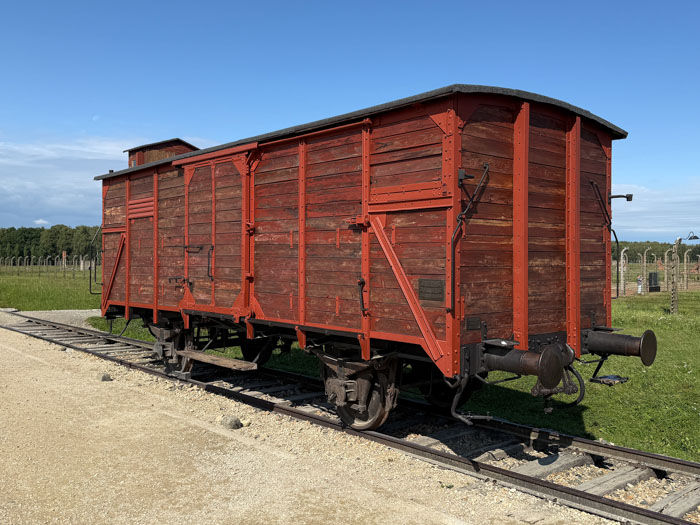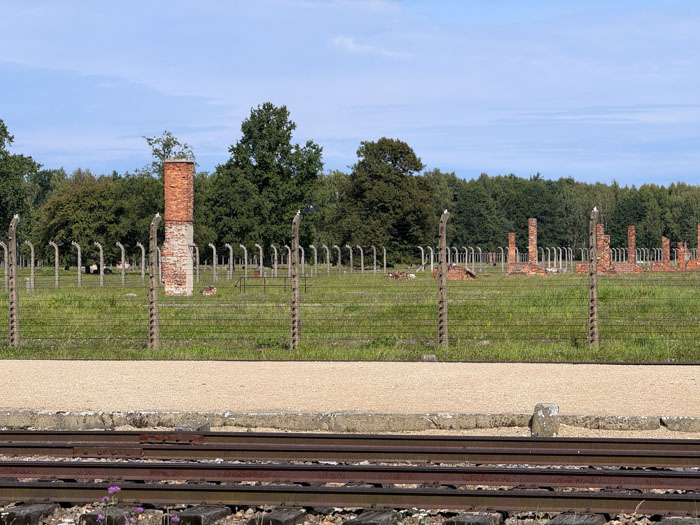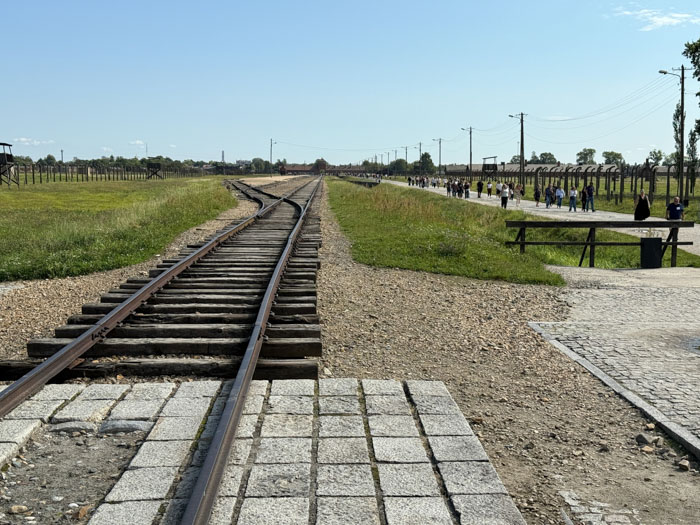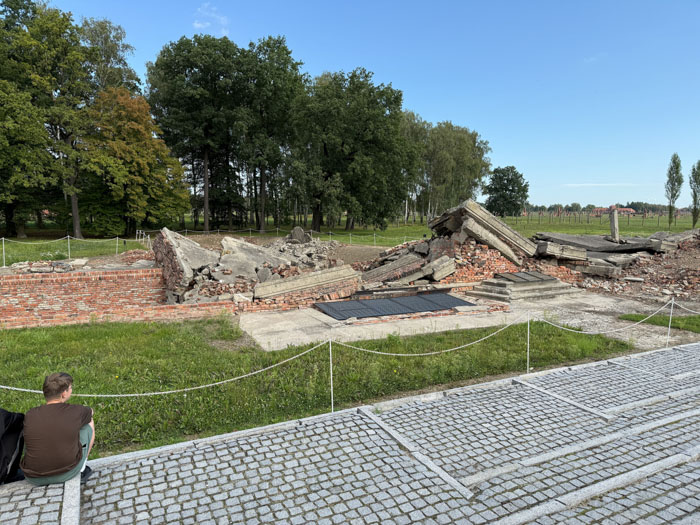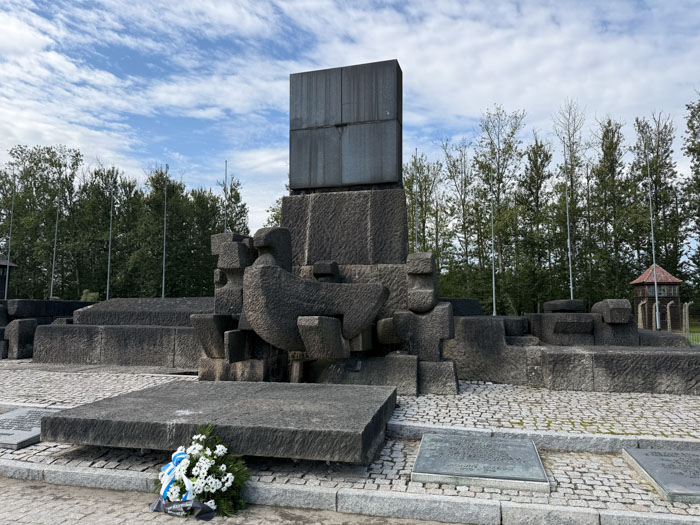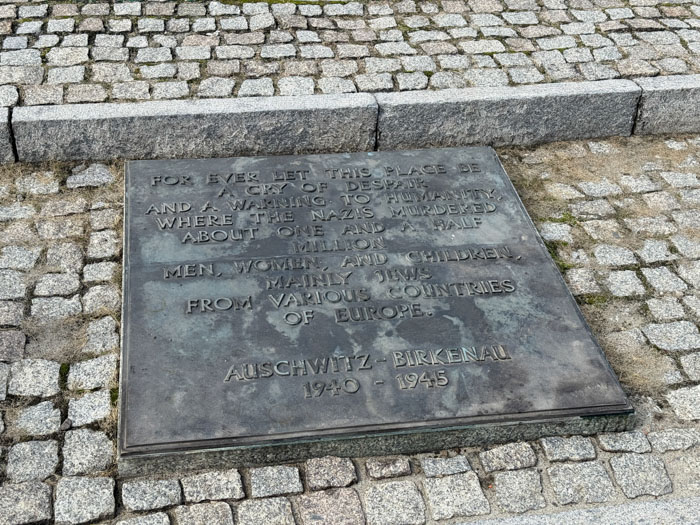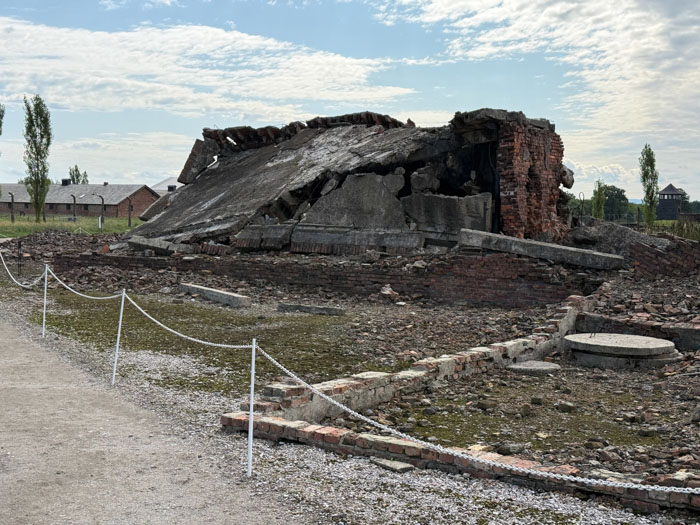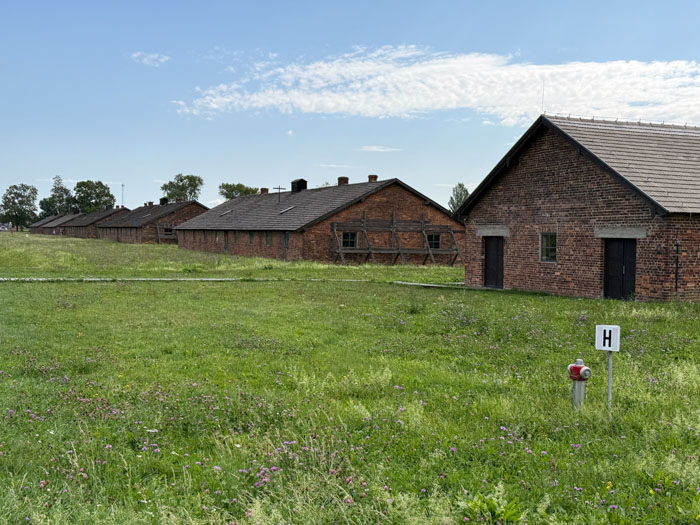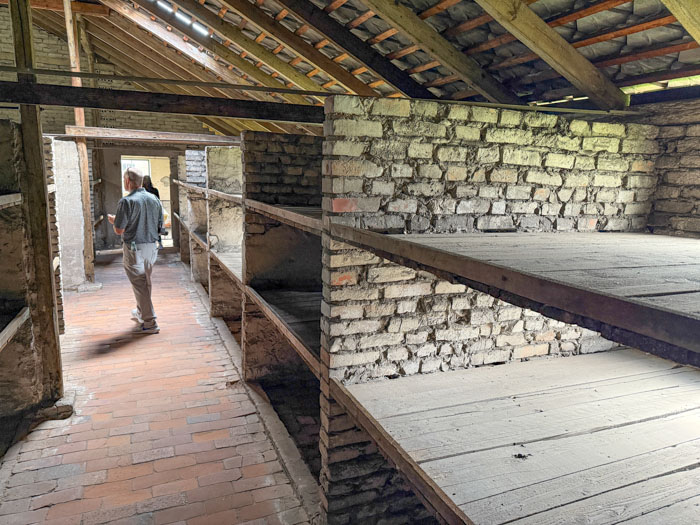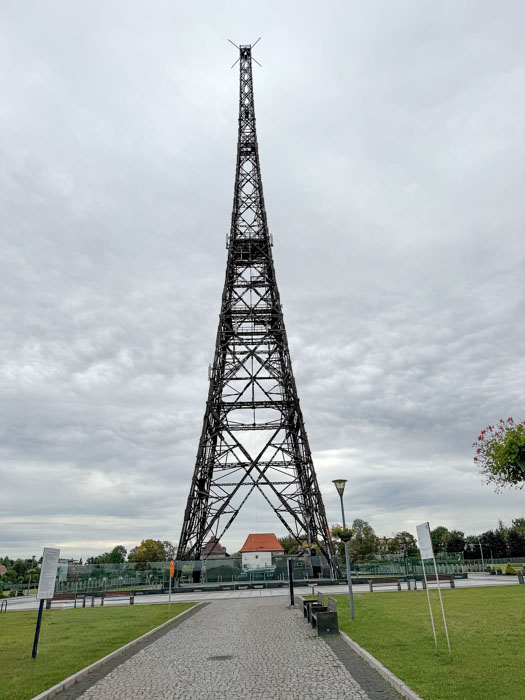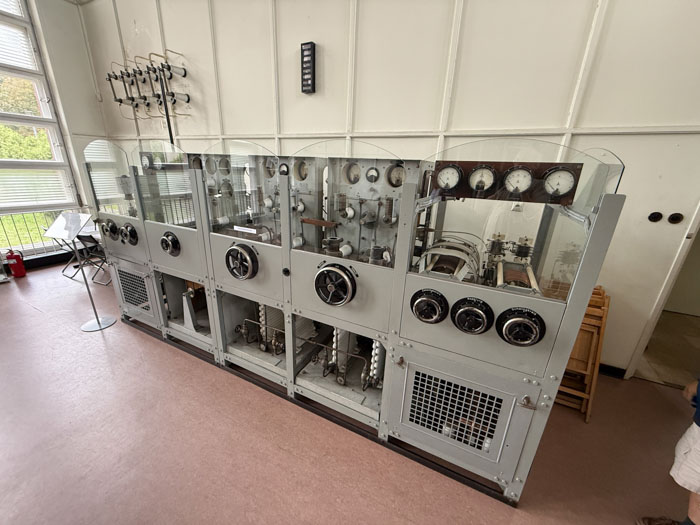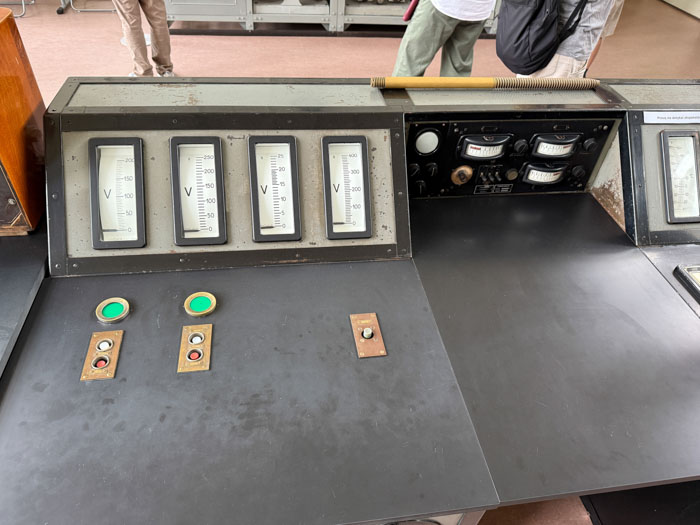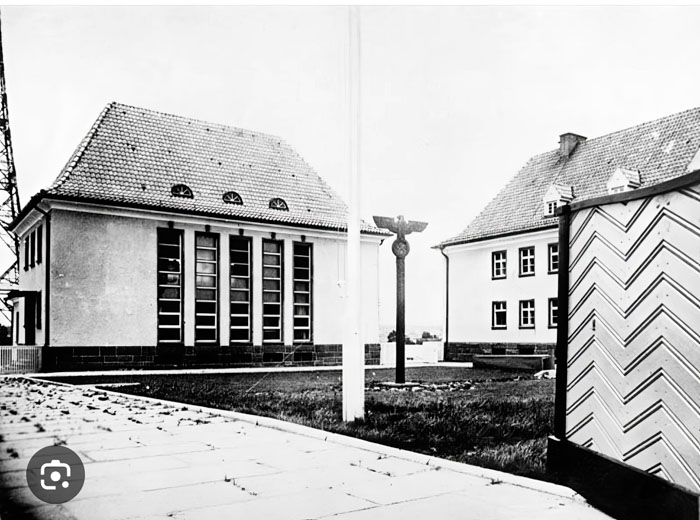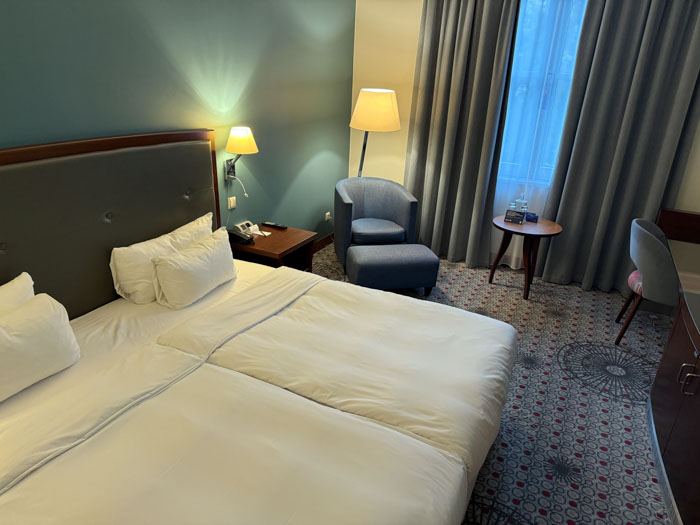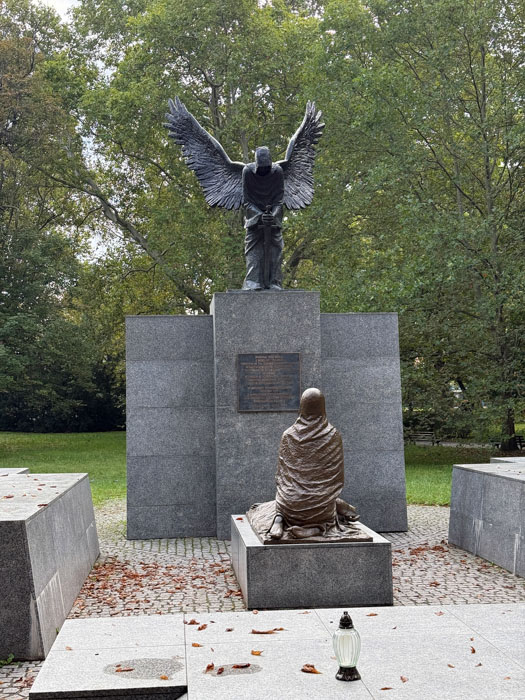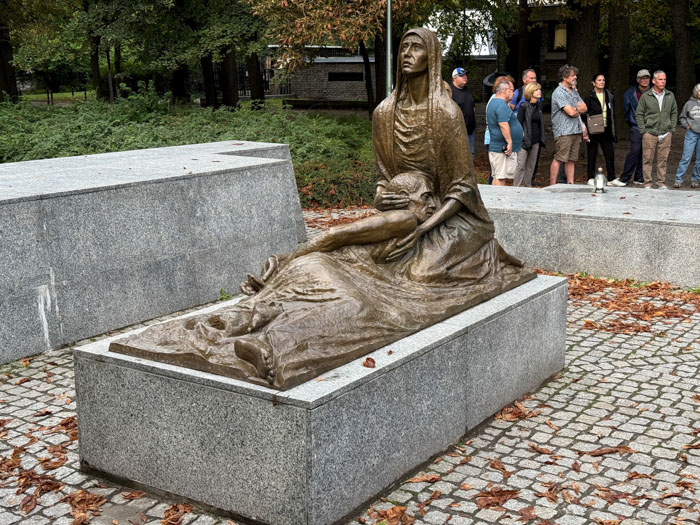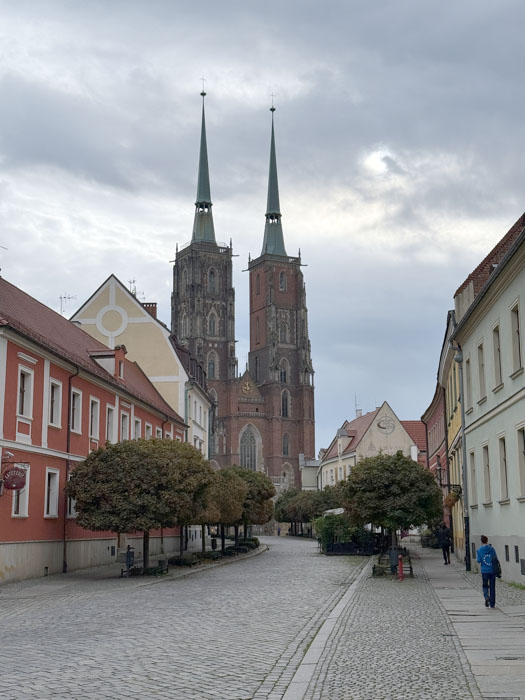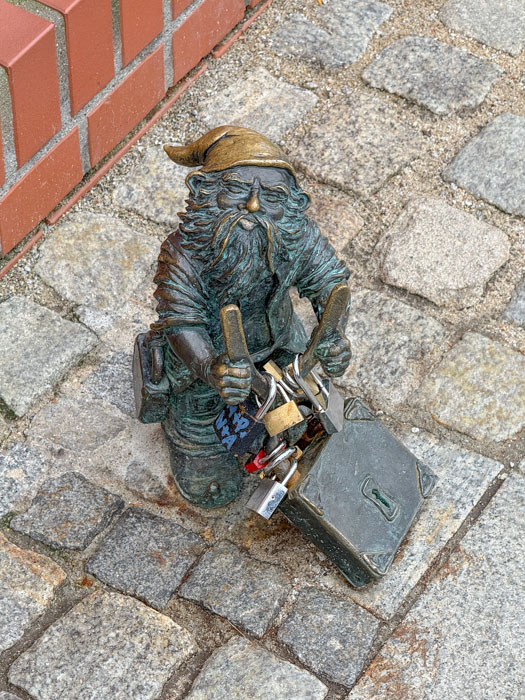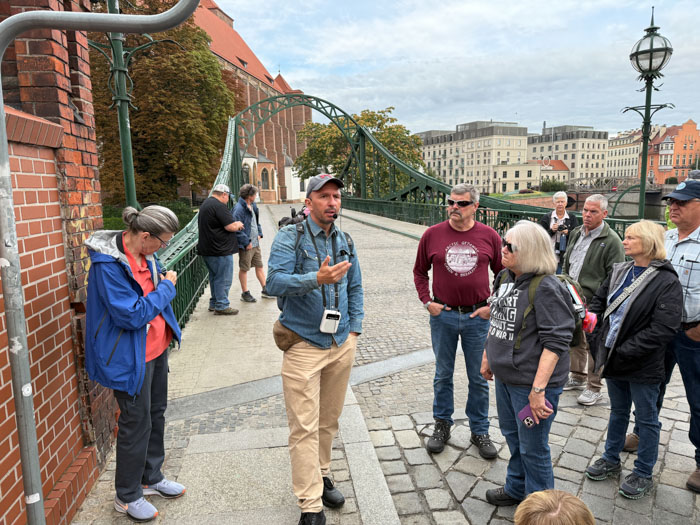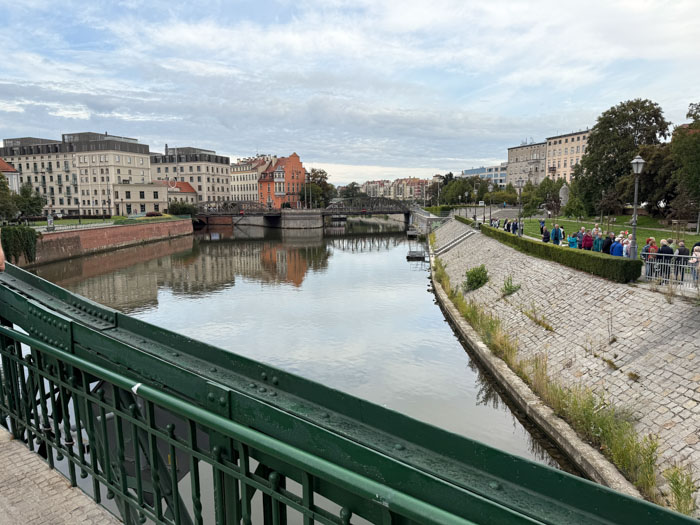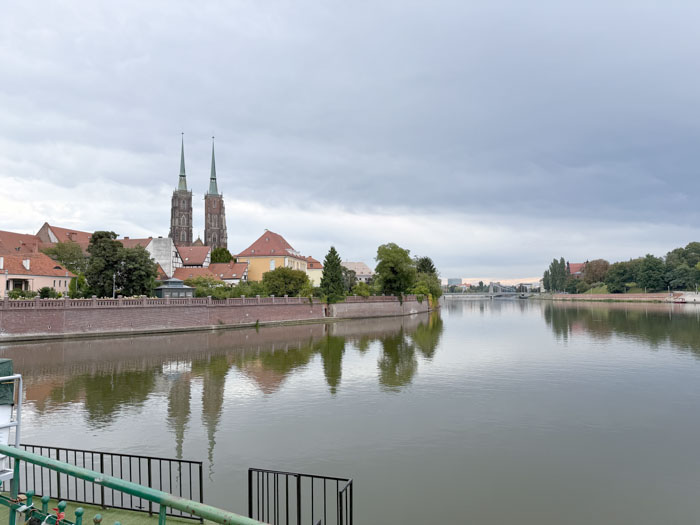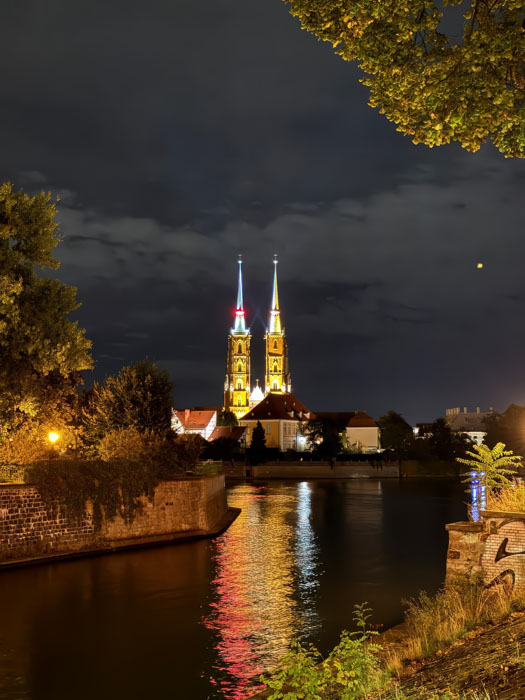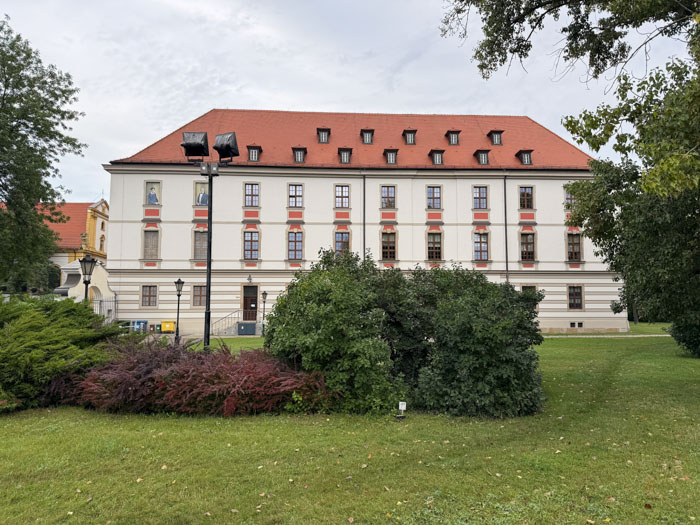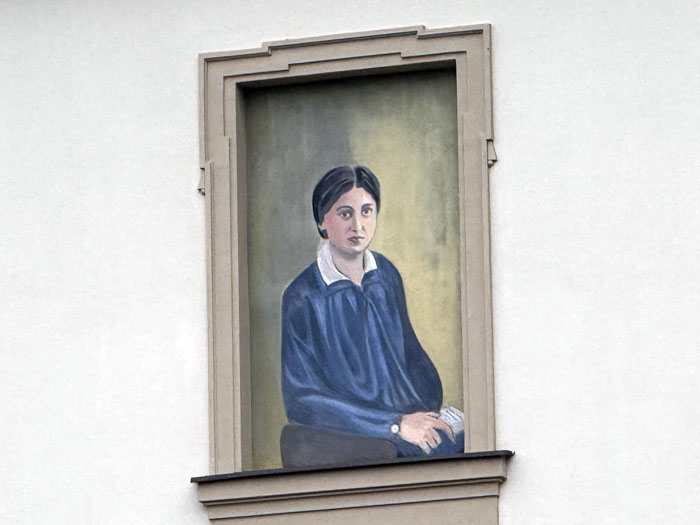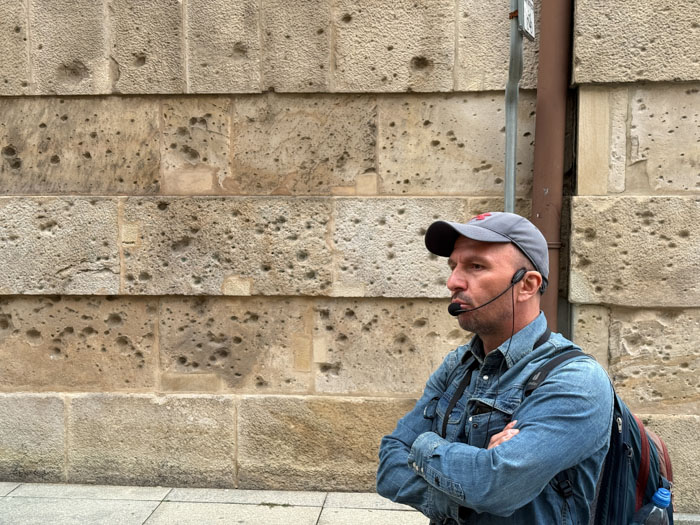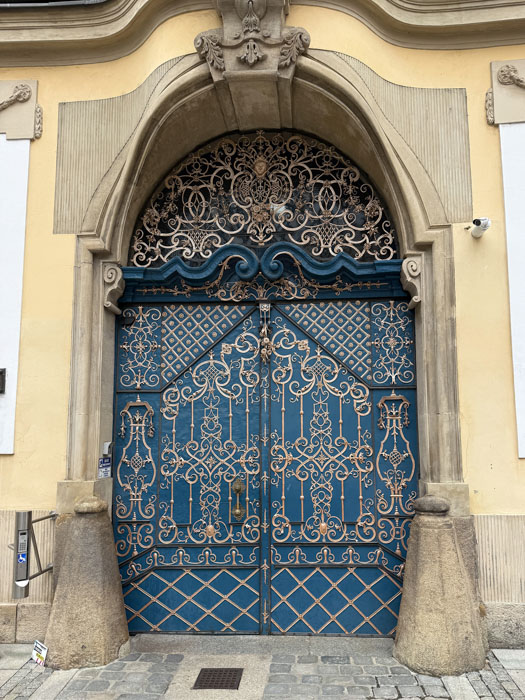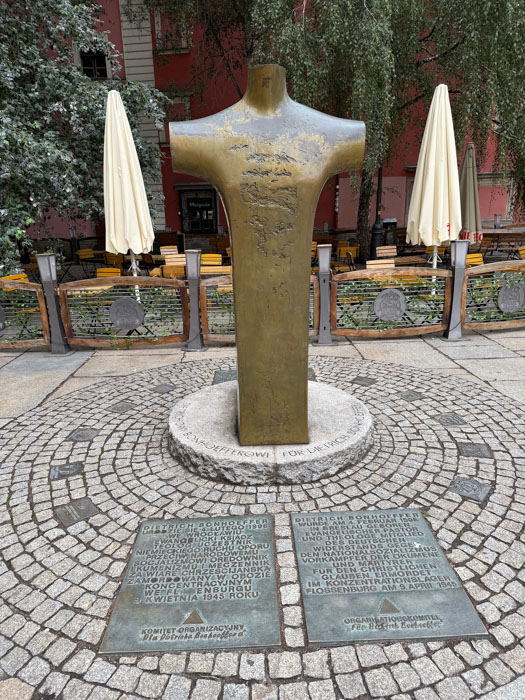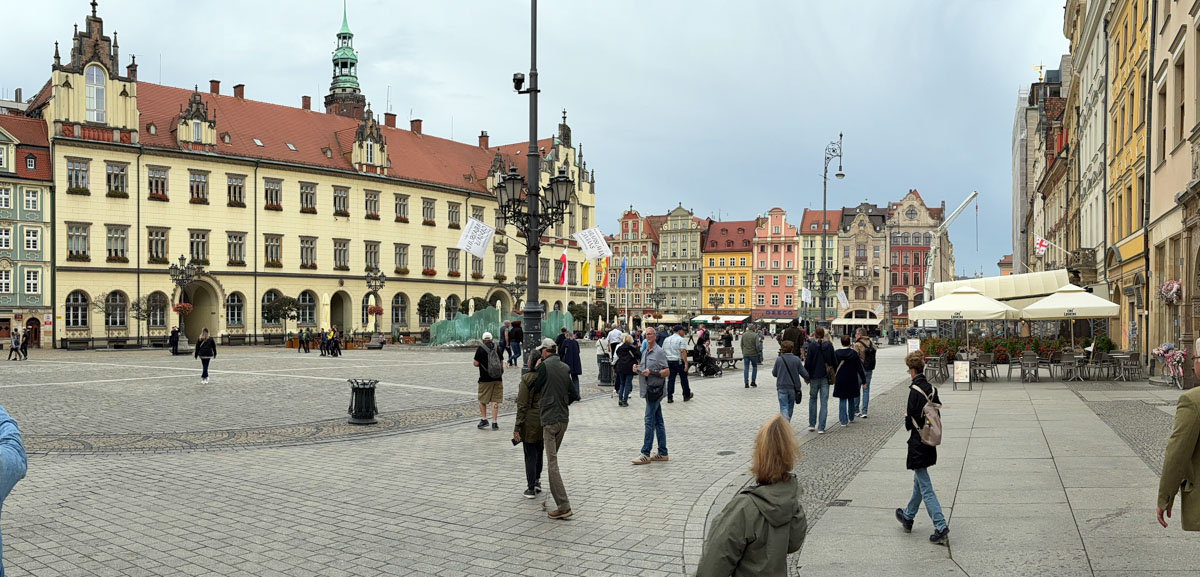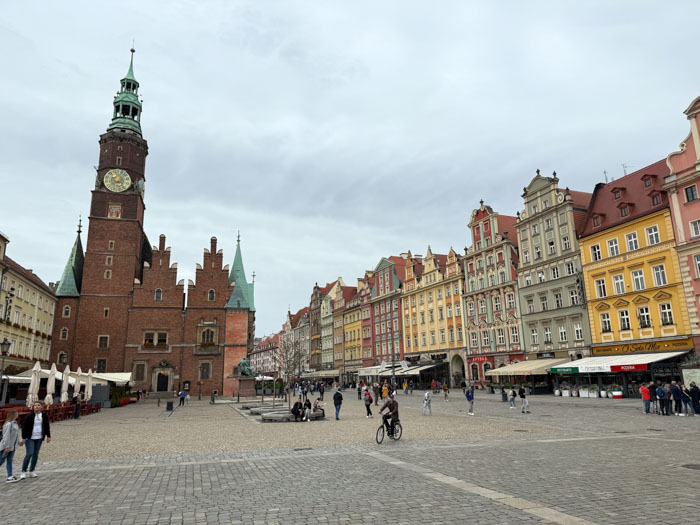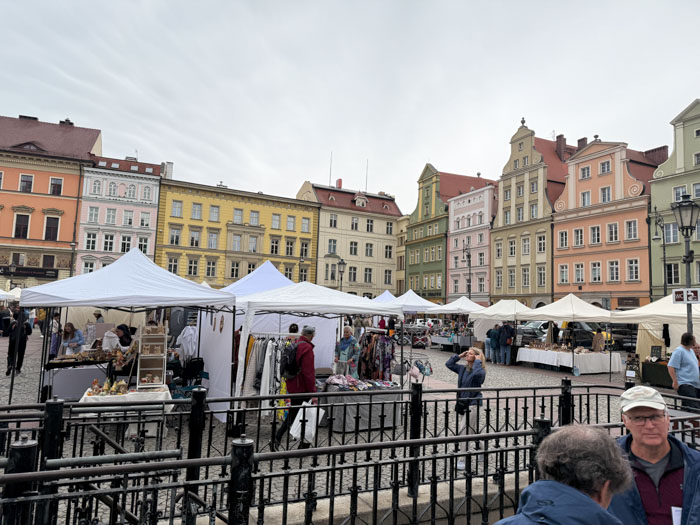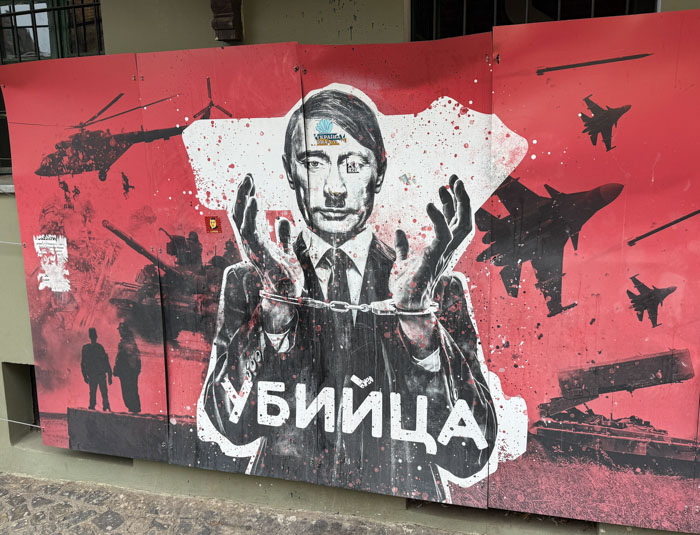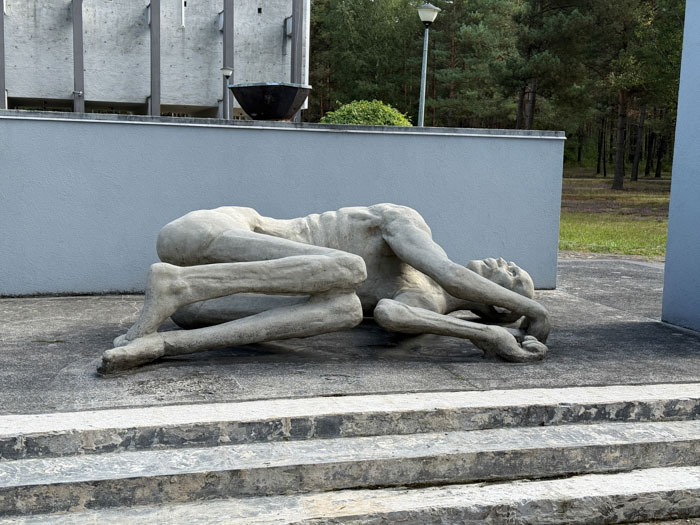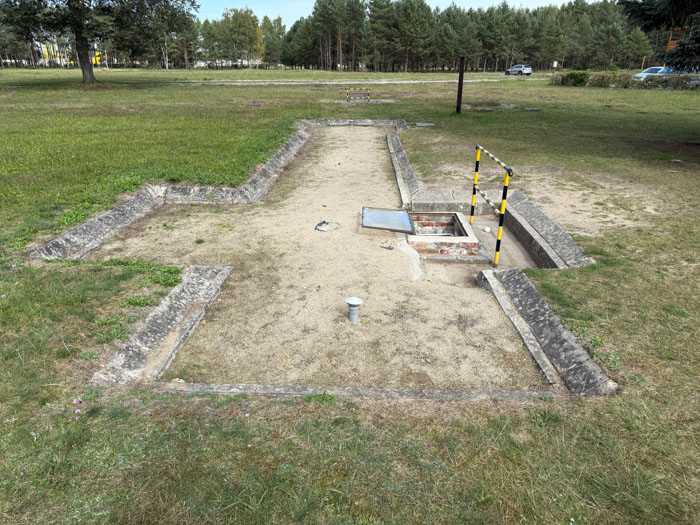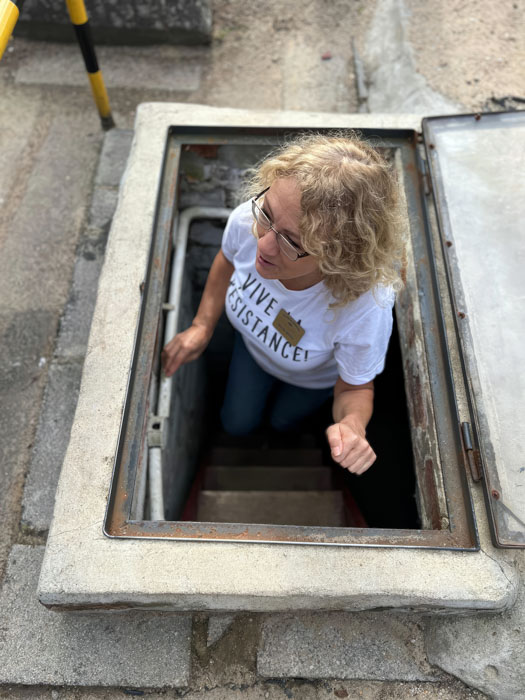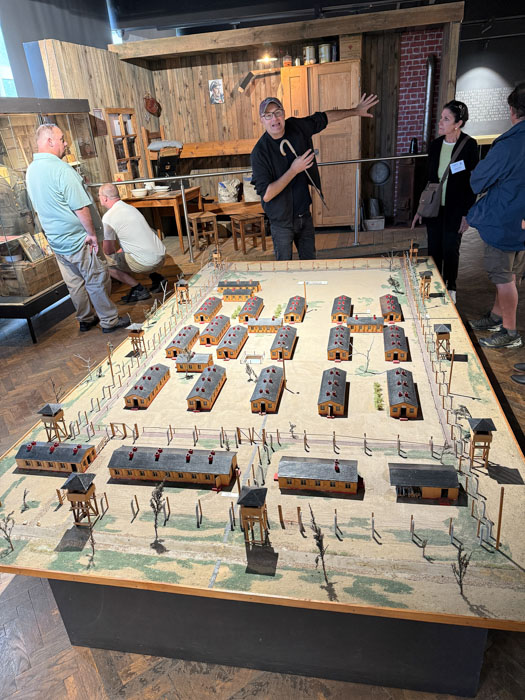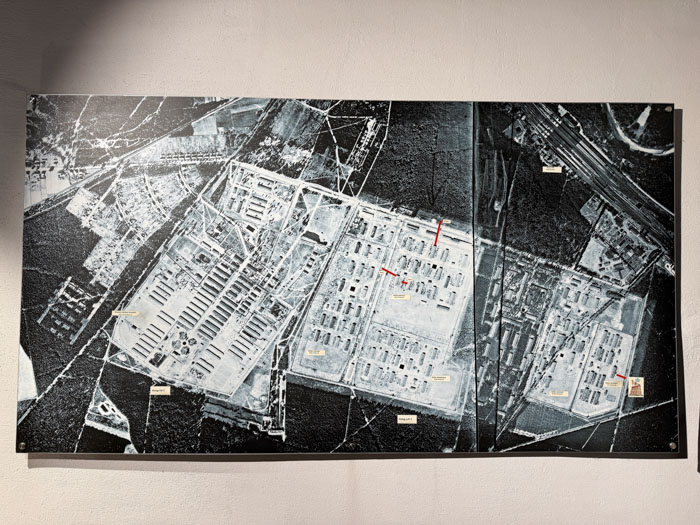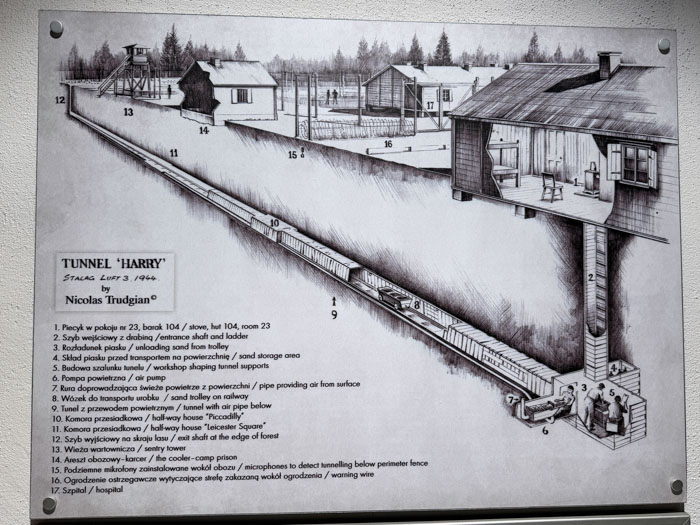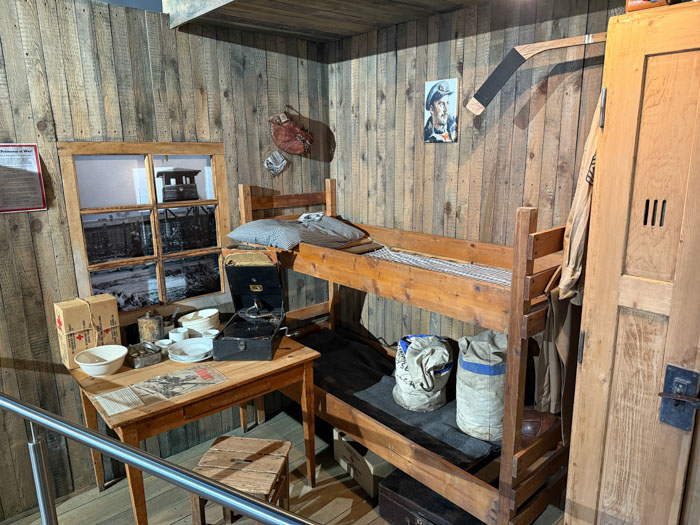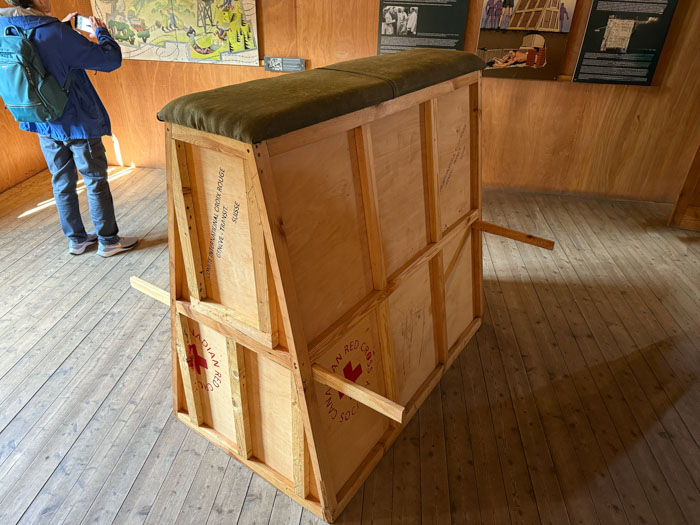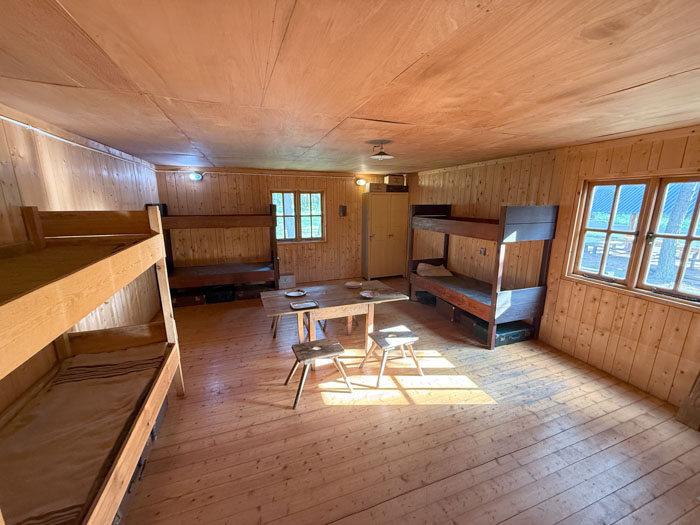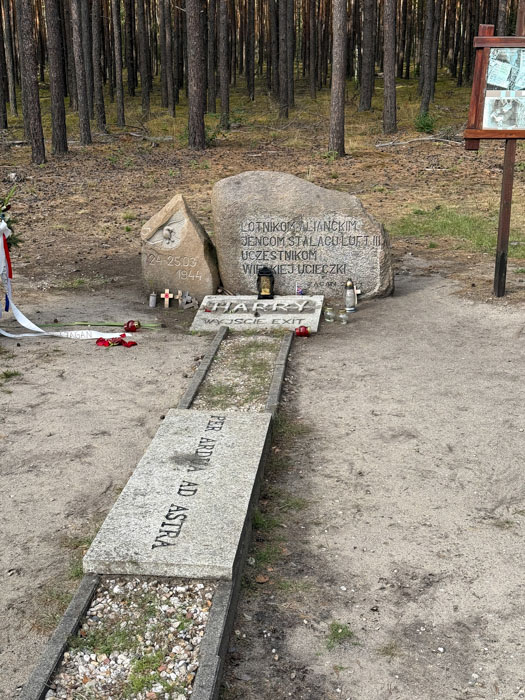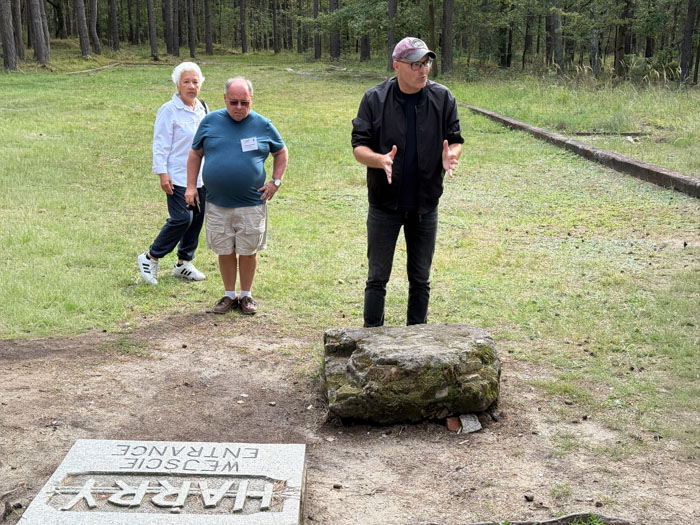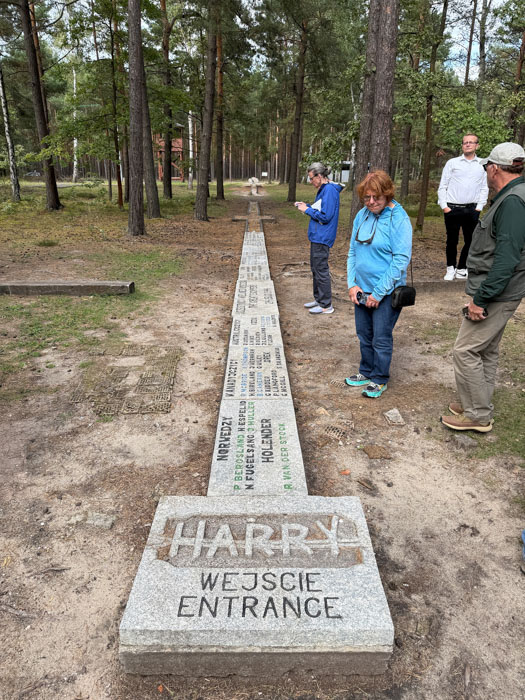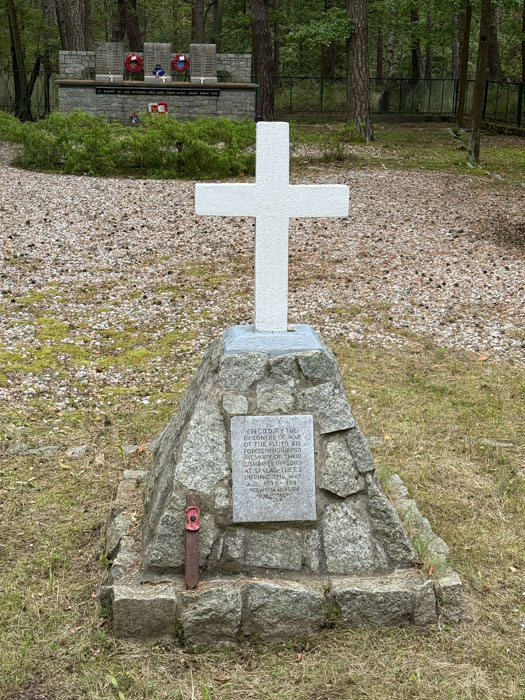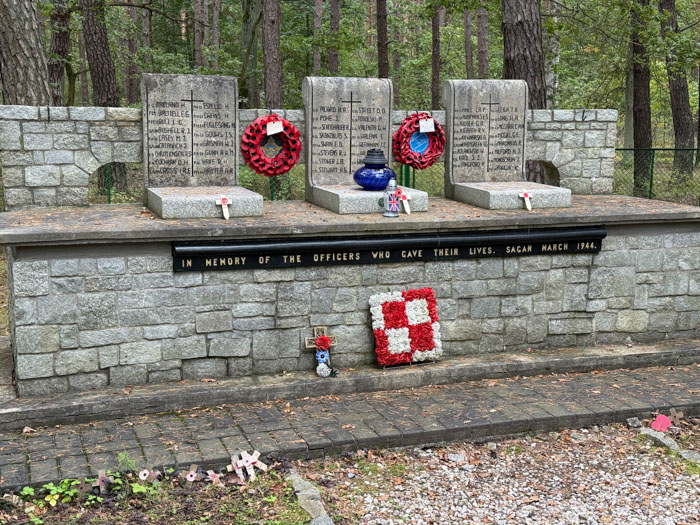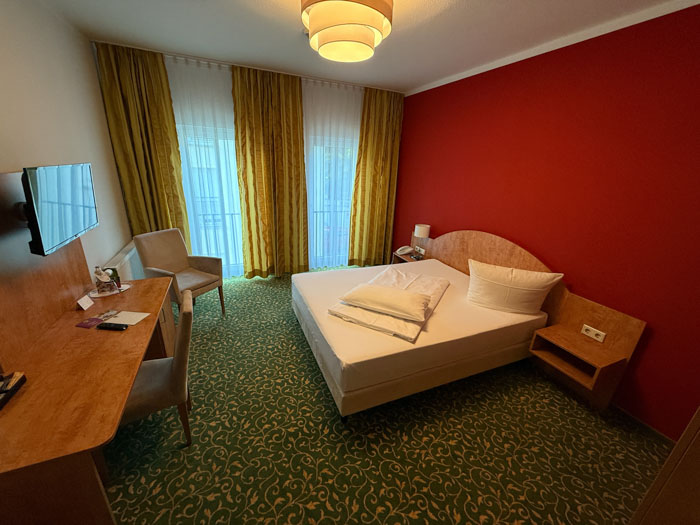Hal Jespersen’s World War II Tour of Poland and Berlin, September 2025 (Part 2)
This is my (Hal's) report of my trip to discover World War II Poland (and Berlin) with Stephen Ambrose Historical Tours. It is my sixth outing with this group and the fourth with Chris Anderson, lead historian.
Since this is a long report with 350+ iPhone 16 Pro photos, I have broken it into three parts:
- Gdańsk, Wolf’s Lair, Warsaw
- Kraków, Auschwitz, Wrocław, Stalag Luft III (this page)
- Kostrzyn, Seelow, Berlin, Potsdam
Wednesday, September 10 — to Kraków
We arose early to get to the train station, leaving the hotel 90 minutes before the train departs. It’s unclear why we are doing the train journey because the bus directly from our hotel should be in Kraków before us. The actual train time is 2.5 hours. The Warsaw central station is quite tiny. We were advised to purchase snacks or eat on the train because there will be no lunch stop today. There is some unease this morning because a number of Polish airports are closed, in reaction to Russian drone flights that have been shot down in Polish airspace.
The train ride was pleasant. We met Sylvester and drove directly to Wawel Castle. Chris gave us a brief overview of Kraków’s WWII history. The city suffered comparatively small physical destruction in the war. As we walked toward the castle, we stopped outside Oskar Schindler’s apartment, which is in a very expensive residential neighborhood. Up a big hill, the royal castle is swarming with tourists. We had 90 minutes to kill before meeting our local guide.
The castle and the Wawel Hill on which it sits are considered the most culturally important site in Poland. A fortified residency on the Vistula River, it was established on the orders of King Casimir III the Great, initially completed in the 14th century, and enlarged over the centuries into a number of structures around a Polish Renaissance courtyard. It represents nearly all European architectural styles of the Medieval, Renaissance, and Baroque periods. For centuries, it was the residence of the kings of Poland, as well as the Polish-Lithuanian Parliament, and is now a tourist site and important art museum. During the war, the Germans established the General Government (Generalgouvernement für die besetzten polnischen Gebiete) in the area of Poland not annexed by the Third Reich or the Soviet Union. Wawel Hill was the headquarters for this department, led by Governor-General Hans Frank. They erected a 1940s-modern building for their administrative staff next to the historic palace with an architecture that Chris described as "Screams Third Reich.”
Our 33 travelers got split into two groups. Mine received a local guide, Macek (spelling?), who was somewhat problematic. He seemed to be like an art history major and knew very little at all about World War II and what happened here. He also spoke very quickly with an accent, a stutter, and a very soft voice, so it was difficult to follow him, but we stuck with him for two and a half hours. We started in the Royal Palace and toured through a half-dozen rooms that were beautifully decorated with tapestries and very impressive ceiling architectures. They had some cool ceramic heaters that originated in the 17th century. One room featured dozens of fake heads facing downward in a series of rectangular openings, creepily reminding me of the House of the Faceless Men on Game of Thrones. The largest room was the Senate chamber, which was rarely used for legislative activities but had a large dance floor. Originally used just as a residence, the palace was modified by the Austrians for military usage, and it was restored to its original composition in the 20th century, which Macek described as needing to correct more damage than was received in World War II.
The second half of the tour was at the cathedral, and for some reason, they did not allow photography. But it was visually very interesting—a true mishmash of different architectures and decorating styles crammed in together, some quite ornate, all very busy. Lots of coffins were present, most with statues of men in armor on top. The main area was surrounded by small chapels in which masses were held separately at different times of the day. Underneath was the crypt, which despite its creepy name was actually well-lighted and had a number of massive coffins set up for famous personages. One notable name I recognized was Władysław Eugeniusz Sikorski, who was the Prime Minister of the Polish government in exile in London and Commander-in-Chief of the Polish Armed Forces during World War II.
Our hotel, the Sheridan Grand, was less than a half-mile away, so we walked there and checked in. It's a very nice, modern hotel with views of the Vistula River, outside of historic Old Town Kraków but close enough to walk. Dinner was yet another mediocre buffet in the hotel.
Thursday, September 11 — Kraków
Charming Old Town Kraków was one of the first 12 UNESCO World Heritage Sites and it benefited from the small amount of damage during the war for three reasons: it was the headquarters for a major German occupation area, it was considered a sort of German area to begin with, and the Germans abandoned it quickly near the end of the war without doing their typical "burn everything down" exit. (When the Soviets entered the city in January 1945, they did do a lot of looting, however.)
Our local tour guide for the day, "Jimi," is a well-spoken and energetic guy who actually knows some things about World War II. We spent the majority of the day walking with him. He gave us a brief history of the city, including how the old town was surrounded by walls following a 13th-century sacking by the Mongols. As that wall was torn down because of lack of necessity, it became a delightful park that rings around the old town. As we walked to the old town from the hotel, we passed by a prison that is now an archaeological museum and the bishop's palace, where the city’s bishop and his assistant, Karol Józef Wojtyła, hid from the Nazi occupation forces. Wojtyła later became Pope John Paul II.
As we strolled through the university district, Jimi described the entrance of the Nazis into the city on September 6, 1939. The Polish Army did not defend the city because it had been sent to Warsaw to defend the capital. Krakow suffered approximately 10% property damage. The Germans immediately began to round up the intelligentsia, such as political leaders and college professors, and they were sent to concentration camps in Germany, although because of pressure from a variety of sources, most were released. They did not make this mistake again, and when the city of Lviv was captured, all of those intelligentsia were shot on the spot.
We entered the main square, which at 40,000 square meters is the largest in Europe. There was once a large town hall here from the medieval period, but only a single tower of that building remains. Now it is awash with restaurants, and there is a large collection of for-hire carriage rides. There is a very long building called the Cloth Hall that is a market that originally specialized in textiles. And there is a large sculpture of a severed head entitled Eros Entangled, the meaning of which Jimi could not tell us. One of the buildings at a corner is the office of Bruno Müller, who was the German installed as mayor during the war.
We saw the exterior of Saint Mary’s Basilica, from which there is an hourly trumpet call of the city anthem performed by a city firefighter. (I returned to the square on my own at 6 p.m. and heard the trumpet—very moving.) During the war, the Nazis stole the 15th-century altar and relocated it to Nuremberg, but it was recovered after the war. We did not get to see the interior, and I found a photo on the internet that makes it look extraordinarily beautiful inside—good thing because when I returned at 6, I went into the church and found they do not allow photography. We stopped at a large monument to the Polish-Lithuanian victory at the Battle of Grunwald, the battlefield we visited a few days ago. It had been reconstructed after the first version was destroyed by the Germans, one of the first monuments that they destroyed in the city. Jimi told us that when Poles want to rile up Germans, they just call "Grunwald, Grunwald."
On the bus, Jimi recounted a brief history of the war as it pertained to the city. We drove outside the old town to visit the KL Kraków-Płaszów concentration camp. (In the past year, this is the ninth concentration camp I have visited.) It was built on the grounds of two Jewish cemeteries. All of the buildings (except for one, the Grey House, where executions were performed) are gone and replaced by grass, sparse woods, and a few small signs and monuments. The camp was built primarily to handle the Jews that were removed as the Kraków ghetto was liquidated in 1943. Jimi estimates that there were 50,000 prisoners, of which 20,000 were murdered, but there were no gas chambers or crematoria on the property. Prisoners who could not work in the labor camp were sent to Auschwitz for execution. The prison conceptually is included in the movie Schindler's List, but filming did not occur there because there were too many modern buildings in the area. A nearby quarry was outfitted to look like the camp.
As we walked away from the camp, we passed by the house that was used by its commandant, Austrian Amon Göth. He was an exceptionally cruel man and stole so many items from incoming prisoners that even the SS could not put up with him. He was arrested and was scheduled for trial, but was released, and the Americans eventually captured and turned him over to Polish authorities. He was tried and executed in 1946.
We bused to the Jewish quarter (the Kazimierz district, which is a distinct area across the river from the Jewish ghetto). We saw a wall, partially constructed with pieces of gravestones, next to the historic Remuh synagogue. We admired a statue monument to Jan Karski, a resistance fighter and diplomat. He acted as a courier in 1940–1943 to the Polish government-in-exile, reporting on the state of Poland, its many competing resistance factions, and also about Germany's destruction of the Warsaw Ghetto and its operation of extermination camps on Polish soil.
For an unhosted lunch, we went to Plac Nowy, a small plaza that is dominated by a large circular building that was formerly a slaughterhouse. I had half of a giant Polish open-faced sandwich called a zapiekanka. I mistakenly started eating it before I remembered to photograph it, so I've included a generic photo from the internet. We walked around a bit more in the Jewish Quarter and found an area that was prominently used in the movie Schindler's List, standing in for the Jewish ghetto, which Steven Spielberg did not use because of modern buildings in the area.
We started our visit to the Jewish ghetto at the Square of Ghetto Heroes. It is a monument that has 68 chairs each representing 1,000 members of the Jewish population. The ghetto was liquidated between June 1942 and March 1943. Jimi told us the story of Tadeusz Pankiewicz, the Polish Roman Catholic owner of the only pharmacy in the ghetto, Apteka Pod Orłem (the Eagle Pharmacy). He provided free medication, medicine, and medical supplies to Jews, offered the pharmacy as a meeting place for resisters, and acted as a conduit for messages between Jews inside and outside the ghetto. His efforts to aid the Jewish population earned him recognition as "Righteous Among the Nations" from Yad Vashem, Israel's official memorial institution to the victims of the Holocaust
We stopped at a small segment of the remaining ghetto wall, which the Germans constructed using the shape of Jewish cemetery headstones as a psychological hit on the Jews trapped inside. Then we drove to the Oskar Schindler enamel factory in the ghetto. It is now a museum about the war and Holocaust, but not about Schindler himself. Unfortunately, we were unable to obtain group tickets to enter. But Chris assured us that it is a relatively generic explanation of the Holocaust that we are already familiar with. Jimi briefly recounted Schindler's role in protecting the lives of 1,200 Jews by getting permission to take them to his relocated factory in Czechoslovakia, something he was able to accomplish because his factory was producing military equipment. Of the almost 28,000 individuals recognized by Yad Vashem, Schindler is one of only three who were members of the Nazi Party.
Since we could not visit the Schindler Museum, Chris and Marta offered an opportunity for an alternative, extra-cost, expedition to visit the famous Wieliczka Salt Mine, which would entail a two-hour round-trip bus journey, descending 800 stair steps, and taking a 3 km walking tour through the mines. Despite its stature as a UNESCO World Heritage Site and a must-see tourist attraction, I declined this opportunity. Here is a link to a YouTube video about the mines.
Instead I chose to rest up and then venture out for a dinner on my own. I had a delicious pizza at Dolabella Due along the main square. I heard from the returning salt miners that there were some significant headroom issues descending the 800 steps, so I have no regrets missing that trip.
Friday, September 12 — Auschwitz and Wrocław
One of our group tested positive for Covid last night and elected to leave the tour. :-( We were on the bus at 6 a.m., accompanied by bagged breakfast and lunch, to accommodate the only group ticket opening at Auschwitz–Birkenau. Our individual tickets are registered by name, and ID is required to enter. This is the tenth concentration camp I have visited within the last year. We were greeted by huge crowds at the entrance. We split the group in two, and each got our own local guide. I wasn't very happy with our guide. He had a distracting accent, mumbled, and spoke too fast. He was like a fire hose of statistics, dates, and Polish names, and by the time you'd get your head around the meaning of a sentence, he was two or three sentences past you. (He has been giving these tours for over 30 years.)
The camp complex consisted of three main camps and more than 40 subcamps. Our first part of the visit was to so-called Auschwitz I: the original camp, established in 1940 as a prison camp for Polish political prisoners and Soviet prisoners of war. Our second stop was Auschwitz II-Birkenau: the main extermination camp, built in 1941, where the majority of the murders occurred. It housed large gas chambers disguised as showers and crematoria. We did not visit the third camp, Monowitz: a forced-labor camp established in 1942 to provide workers for the nearby IG Farben synthetic rubber and fuel factory.
We proceeded down a long concrete tunnel to the original camp while we heard on a loudspeaker the names of some of the victims of the camp. I was quite surprised about the appearance of the buildings in the camp. They were on leafy avenues, with well-maintained brick construction, and the insides were neatly smoothed cement walls that were freshly painted. When I served with the U.S. Army in Germany in the 70s, I used to work in buildings that looked just like this. Other concentration camps I have visited (this is my tenth) were primarily wooden barracks. It turns out that these Auschwitz buildings were originally Polish army barracks. Many of these housed 1,100 prisoners. You could feel the presence of the 2.5 million visitors a year by witnessing the severe wear on the concrete stair steps.
The tour was rather regimented, which was a necessity because there were so many tour groups jostling for space going into the small buildings. If I had been touring on my own, I would've been able to stop to read some of the signs, but we marched right by many of them. We filed through a number of buildings on covered topics, such as: executions (2,000 individuals fit into a gas chamber); the processing of human hair measured in tons; plundering the belongings of inmates, with huge piles of clothing and other items on display; gruesome medical experiments; and torturous punishments in the grizzly detention ward building. Outside we saw the Wall of Death where prisoners were shot en masse, an area for hanging prisoners from a railroad rail, and a crematorium and gas chamber. Nearby the latter we saw the gallows where Commandant Rudolf Höss was executed in 1947. One tidbit that I learned was that Auschwitz was the only camp that tattooed prisoner numbers on their arms.
From 1940 to 1945, at least 1.3 million people were deported to Auschwitz, and approximately 1.1 million were murdered there. The vast majority were Jews, but the Nazis also targeted other groups. Soviet troops liberated the camp on January 27, 1945, finding approximately 7,000 ill and starving prisoners who had been left behind.
After a short bus ride to Birkenau, we resumed touring with our same mumbling tour guide, a walking tour of approximately 1.5 miles entirely outside. We drove by the house of the Commandant, Rudolf Höss, the subject of the Oscar-winning movie The Zone of Interest. This camp was more traditional with wooden barracks that crammed 600–700 people in each building. As we walked about a half mile to the crematorium area, we passed by a sample railroad cattle car used to transport prisoners, and also the ruins of the building in which Dr. Mengele did his infamous medical experiments. There are ruins of two crematoria in this particular area, numbers 2 and 3. Our guide pointed out that more people were killed in these two than the British and Americans lost in total during the war. There were two other crematoria in other areas that we did not visit. On the way back to the main entrance, we went through the area with women's barracks, brick buildings that were designed to house 777 inmates but often had as many as a thousand. They had to sleep on large communal wooden platforms surrounded by bricks.
We drove an hour to Gliwice, which in 1939 was a German town named Gleiwitz. The Gliwicka radio station was the site of the infamous incident of August 31, 1939, when Germans disguised as Polish/Silesian insurgents seized the station and tried to broadcast this widely, a failed false flag operation that Hitler nevertheless cited as an excuse to invade Poland the next day. The radio control room looks just as it did then, with cool antique equipment. We watched a rather corny movie about the incident. The radio tower ascends 364 feet, the tallest wooden structure in Europe.
It was about a two-hour bus ride to the Polish city of Wrocław (VRAHTZ-waaf), which was previously the German city of Breslau. Chris narrated a brief history of the city and the siege plus fierce urban battle to seize it by the Soviets. Our hotel is once again a Radisson Blu, which is more modern than the Gdańsk version. Another buffet, not as mediocre as yesterday’s. One our group, Julia, ventured out and took a lovely nighttime photo, which she shared with us on our WhatsApp group chat.
Saturday, September 13 — Wrocław/Breslau and Stalag Luft III
We started with a four-hour [mostly] walking tour of Wrocław, led by Michael, a very articulate and knowledgeable guy, but who had a sardonic attitude and was willing to go off on lengthy tangents on political topics. He started off by describing the three-month siege of the city that started in February 1945. He mentioned that the 2015 Steven Spielberg film, Bridge of Spies, was filmed here, which indicates that the appearance of the city was much closer to 1960 Berlin than the actual city was at the time. He described the Polish insurgent terror bombing of the railroad station in April 1943, which they managed to blame on German communists. We stopped at a monument to the victims of the Katyn Massacre, which he described in detail even though we saw the principal monument in Warsaw a few days ago. Then he went off on a long diatribe about the problems with Russia today.
We boarded the bus for a quick jaunt around the city and drove down the street that had been turned into an airfield during the siege. This operation required demolishing hundreds of buildings and using manual labor to smooth out all of the rubble. He described the career of Karl Hanke, Gauleiter of Lower Silesia, who commanded the German forces during the siege. Back on foot, we walked through a part of the city that originated from 900 AD and passed by an interesting tiny statue of a gnome. Gnomes were adopted as symbols by an anti-communist political group called Orange Alternative, and have since been used as a marketing campaign for the city. There are currently hundreds of these little statues planted around, many sponsored by commercial establishments.
We stopped in front of a monastery that was the city headquarters of the German army. Here there was a window portrait of Edith Stein, a Jewess who converted to Catholicism and became a nun. In 1942, she was murdered in Auschwitz. She was canonized as Teresa Benedicta of the Cross. Michael described how the Germans kidnapped small Polish children who were blonde and blue-eyed and spirited them back to be raised as Germans. We stopped outside a bomb shelter where he described how residents, particularly the young, got drunk in the shelters and committed public sexual acts. There was a big need for bomb shelters because the city increased its population from 600,000 to a million during the war, primarily because of incoming refugees.
At a high school, we discussed recovering stolen art objects and slipped in an argument for supporting the war in Ukraine. We came upon a commercial building that had dozens and dozens of bullet holes, all at person height, indicating that this was a site for impromptu executions. We talked about the fleeing of civilians from the city in January 1945. It was 25 km to the nearest train station in the dead of winter, and there was no way to get there other than walking through the snow in sub-zero temperatures. We discussed the extreme amount of raping that went on when the Soviets entered the city, and it was more than simple revenge for German actions.
We passed by a plaque about Fritz Haber, born here, who is known as the father of chemical warfare for his weaponization of chlorine gas during World War I. His work was used without his involvement for the development of the Zyklon B gas used in the concentration camp gas chambers. But he also won a Nobel Prize in Chemistry for his invention of a method used to synthesize ammonia from nitrogen and hydrogen gases, which made an enormous difference in the production of fertilizer, helping to alleviate world hunger. Dietrich Bonhoeffer, also born here, was a prominent Protestant theologian who was a leading anti-Nazi. He was unjustly accused of plotting with others to assassinate Hitler on July 20, 1944, and was sent to a concentration camp where he was hanged on April 9, 1945. He now has a monument downtown.
In the large market square, we were treated to a long lecture about pre-war economics and anti-aircraft technology. We passed an interesting poster about the war in Ukraine that depicted Vladimir Putin dressed up as Adolf Hitler. We entered the Jewish Quarter, which was the second-largest in Germany. It originally had 15,000 inhabitants, and at the end of the war, there were 50. We stopped in a large and uninteresting open square surrounded by a lot of government buildings. It was a site for numerous rallies, including some led by Hitler himself.
We drove a couple of hours to the village of Żagań (former German name Sagan) to visit a museum commemorating Stalag VIII C and Stalag Luft III. The former was a Wehrmacht prisoner of war camp, predominantly for French POWs, and the latter run by the Luftwaffe for captured Allied aviators. This had been the site for various army camps since the 19th century and was a POW camp in World War I. It is currently directly next to a major Polish army training area. The museum is located inside the footprint of VIII C.
We started at a monument that actually represents an emaciated prisoner at Auschwitz, rather than a POW protected by the Geneva Convention. When it was erected in 1961, the artist considered that all POW and concentration camps were essentially equivalent. Also outside is a small model of the tunnel used by the prisoners in the Great Escape. The real one was 30 feet deep and 350 feet long. Despite urgings from my compatriots, I did not attempt to climb down into the model. Some of us did so and were excited by their adventure.
We had a very interesting talk from the museum curator, Marek, who described in detail the architecture of the camp, its history, and the details of "The Great Escape." One of the inaccuracies of the movie is that there were actually 500 U.S. POWs who participated in creating the logistics of the escape. None of them actually tried to execute it because by that time they were no longer intermixed with the British officers and had been moved to a separate area. Four officers from the 1942 Doolittle Raid were in the camp. Over the history of the camp, 100 escape tunnels were built, but most were discovered or collapsed. The two that succeeded were the Great Escape tunnel called Harry and the Wooden Horse escape.
The "Wooden Horse" escape was where Allied airmen Michael Codner, Eric Williams, and Oliver Philpot built a hollow, wooden vaulting horse from Red Cross crates. Prisoners used the horse to conceal a tunnel entrance near the camp's perimeter, while gymnastic vaulting over it masked the digging. After months of tunneling, the three men successfully escaped through the tunnel and eventually reached neutral Sweden, from where they were repatriated to Britain. There is a 1950 movie of that same name that documents the escape and Marek recommends it.
The Great Escape saw 76 men successfully reach outside the perimeter, but only three of them—one Dutchman and two Norwegians—attained freedom. Of the remaining 73, all were captured and 50 were executed by the Gestapo, although not in the mass machine-gun manner shown in the movie.
I asked Marek about the crews from the US 8th Air Force’s 100th Bombardment Group, as depicted in the TV series Masters of the Air. He pointed on the camp map to the actual building in which they were housed. He said that he had been participating as a technical advisor to the filming of the series, and he told me about some of the minor technical inaccuracies. He actually met Lt. Alex Jefferson, one of the Tuskegee Airmen depicted in the series.
Virtually none of the camp is in existence anymore. Buildings were deconstructed to provide repair material for local villages. Next to the museum is a replica barracks that was sponsored by the RAF, but has little in it. Next, we drove to the actual site of Stalag Luft III. There is a long monument that tracks the path of the Harry tunnel and has the names of all the escapees: successful, captured and returned, and killed. There is a replica guard tower and the foundation of the camp prison, the Cooler. The Wooden Horse tunnel is about two kilometers away, but we did not have the time to visit that one.
Then we drove to the mausoleum that was designed and built by the prisoners to house the cremains of those 50 executed. Those cremains have since been reinterred at the Commonwealth War Graves Commission cemetery in Poznan, Poland. Marek surprised us by saying that only six other prisoners of these Stalags died in captivity. As a bonus stop, we traveled to the train station, which was only about 500 m cross country from the exit of the Harry tunnel. Chris was excited to say that it was in exactly the same condition as during the war, but I found it to be simply a typical central European train station and not photograph-worthy.
We drove across the border into Germany, where in Bad Muskau we checked into the Kulturhotel Fürst Pückler Park, a renovated Soviet-era hotel. Basic and utilitarian, but comfortable. We had yet another hotel buffet dinner, which retreated back to the mediocre level. (One example: dessert was wine-flavored Jell-O.)
